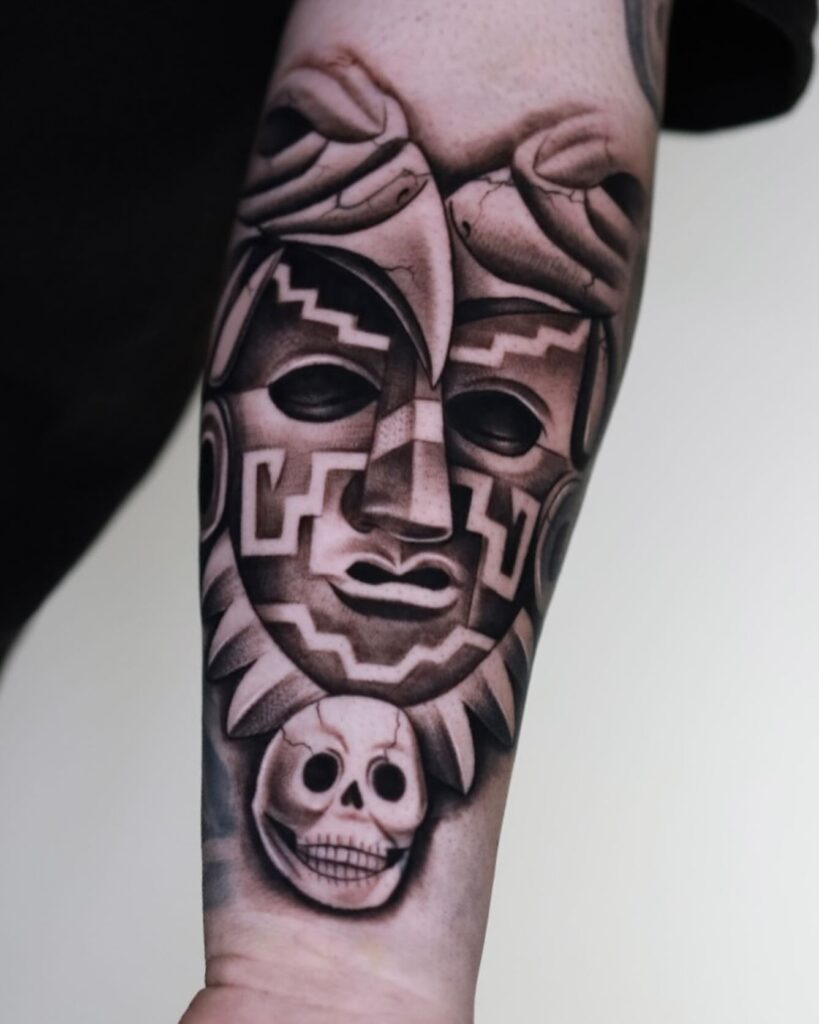1. Aztec Sunstone Tattoo
The Aztec Sunstone, also known as the Calendar Stone, is one of the most iconic symbols of Aztec culture. This tattoo typically features the intricate design of the Sun God, Tonatiuh, at the center, surrounded by the 20-day signs of the Aztec calendar. The Sunstone represents the Aztec’s deep understanding of time and cosmology. Tattooing this symbol is a tribute to ancient wisdom, emphasizing themes of life cycles, power, and eternity. It’s often inked with meticulous detail, highlighting the stone’s complex carvings, making it both a historical and artistic statement.
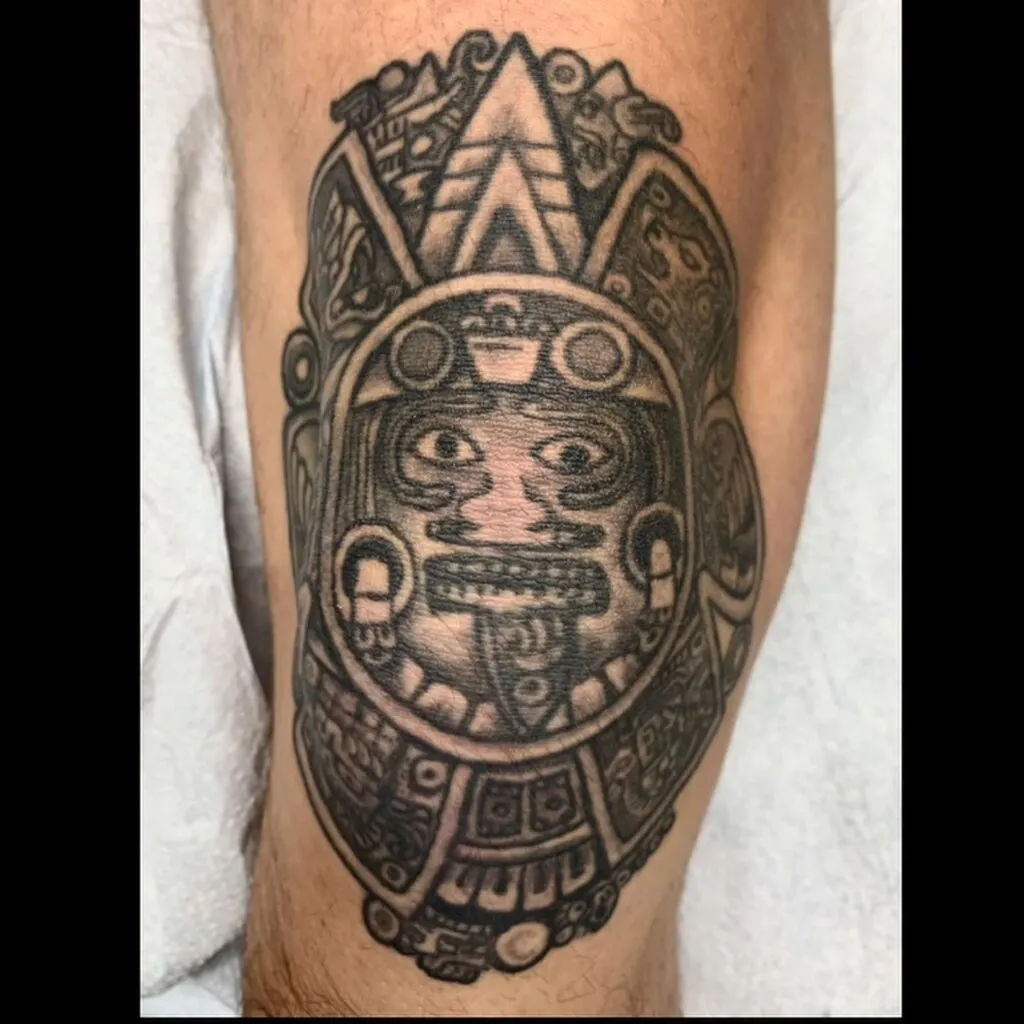
2. Sugar Skull (Calavera) Tattoo
Sugar skull tattoos are a vibrant representation of Mexico’s Day of the Dead (Día de los Muertos). These colorful designs celebrate the lives of deceased loved ones, emphasizing the Mexican view of death as a natural part of life. The skulls are often adorned with floral patterns, marigolds, hearts, and vibrant colors. Some also incorporate the names of loved ones within the design. This tattoo is a symbol of remembrance, love, and the joyous celebration of life, making it a popular choice for those who want to honor their ancestors in a visually striking way.
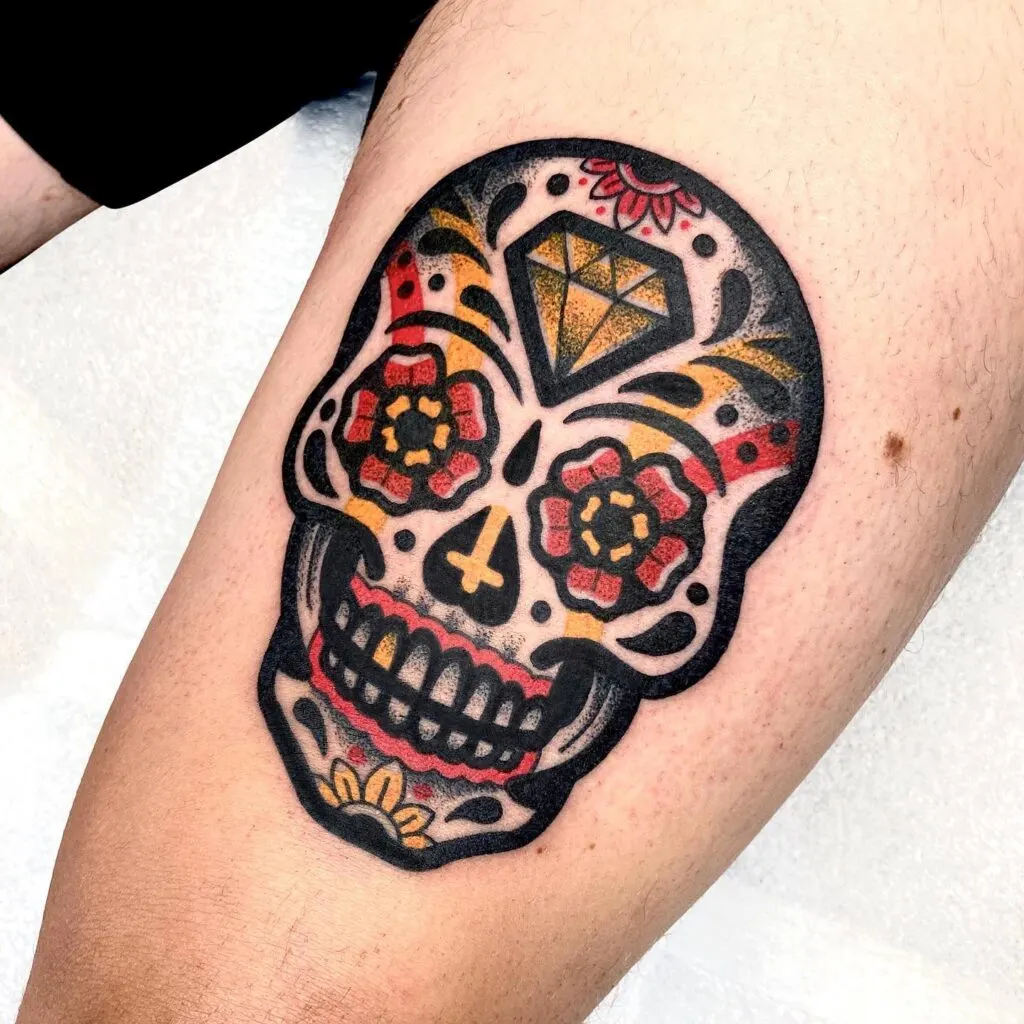
3. La Catrina Tattoo
La Catrina is a famous figure associated with Día de los Muertos. Originating from the artwork of José Guadalupe Posada, La Catrina is a stylish skeleton woman dressed in elegant clothing. A La Catrina tattoo often features intricate details, combining elements of elegance and death, symbolizing the idea that death is the great equalizer. This tattoo is rich in cultural significance, representing both the acceptance of mortality and the celebration of life’s beauty, often depicted in vivid colors and ornate designs that capture the spirit of the holiday.
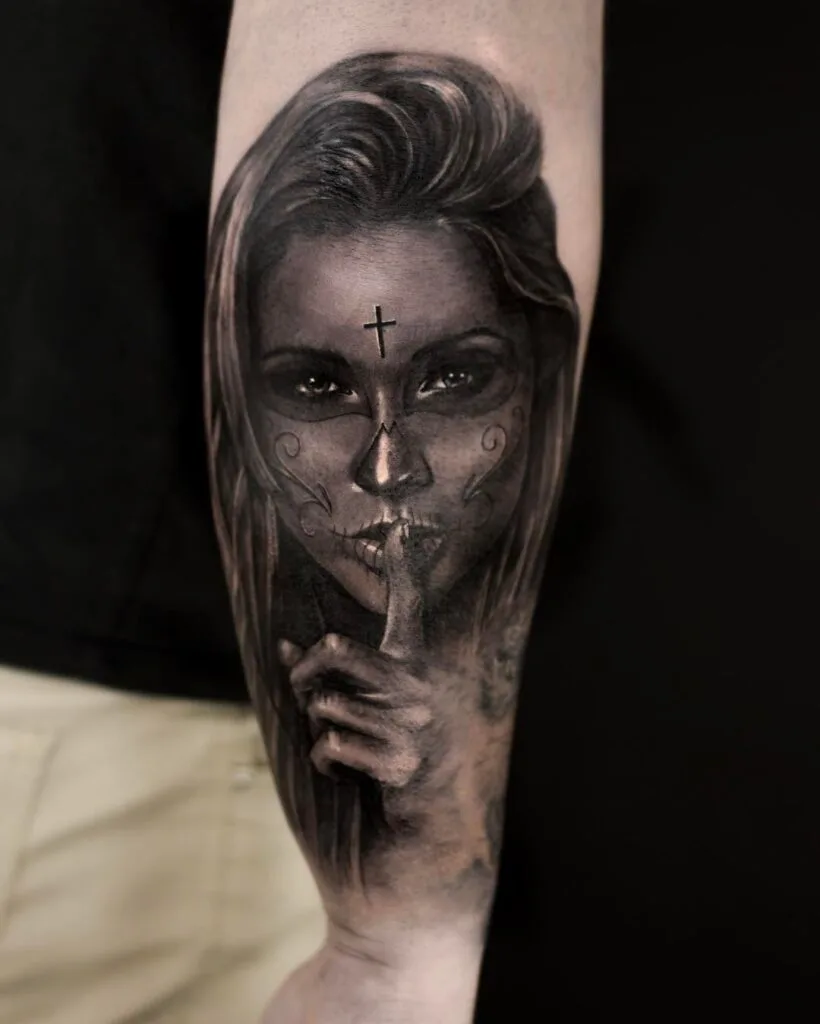
4. Aztec Warrior Tattoo
Aztec warrior tattoos are powerful symbols of strength, courage, and honor. These designs often depict a fierce warrior adorned in traditional Aztec attire, including a feathered headdress and carrying a shield and spear. The warrior symbolizes the Aztec values of bravery and sacrifice, reflecting the culture’s martial traditions. These tattoos are detailed and dynamic, often placed on large areas like the back or chest, allowing for the full portrayal of the warrior’s might and the intricate patterns of his armor and weapons.
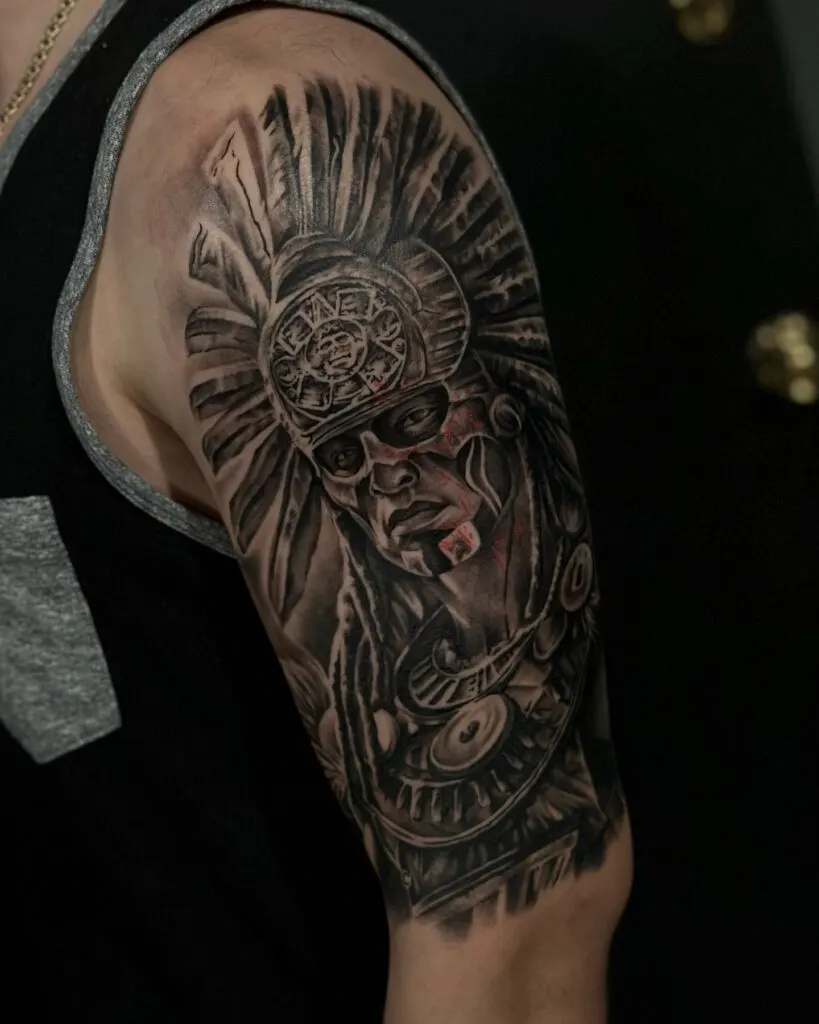
5. Quetzalcoatl Tattoo
Quetzalcoatl, the Feathered Serpent, is one of the most important deities in Mesoamerican culture. A Quetzalcoatl tattoo represents wisdom, knowledge, and the connection between the earth and the sky. The design typically features a serpent with feathers, combining the elements of flight and earthbound strength. This tattoo is often rendered with a mix of vibrant colors to highlight the feathers, symbolizing the duality of life and the power of nature. It’s a profound symbol for those who seek to embody balance, wisdom, and the mystical aspects of the ancient world.
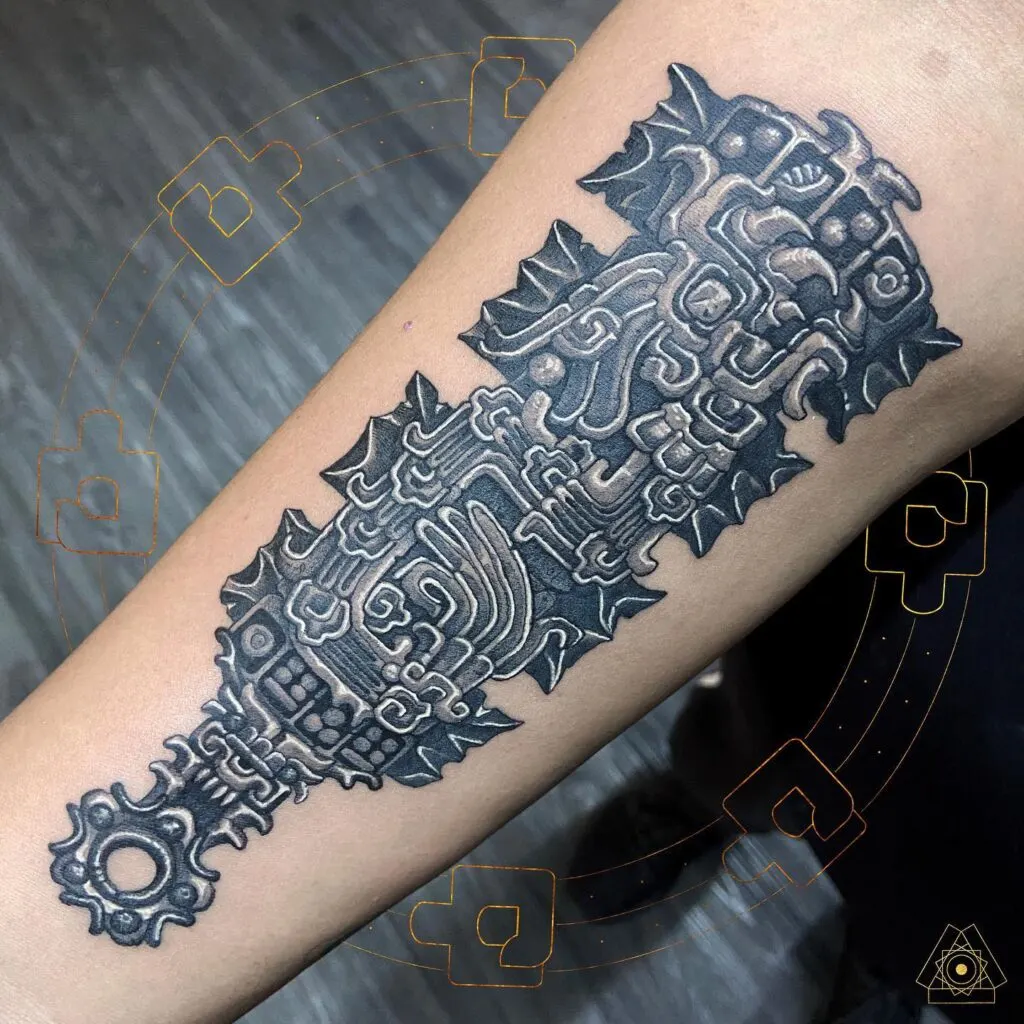
6. Mexican Eagle and Snake Tattoo
This design is based on the emblem of the Mexican flag, which depicts an eagle perched on a cactus, devouring a snake. The image is rooted in Aztec mythology and represents the founding of Tenochtitlan, the capital of the Aztec Empire. A Mexican eagle and snake tattoo symbolizes patriotism, resilience, and the triumph of good over evil. The intricate details of the eagle’s feathers and the snake’s scales make this tattoo a powerful and visually striking symbol of Mexican heritage and national pride.
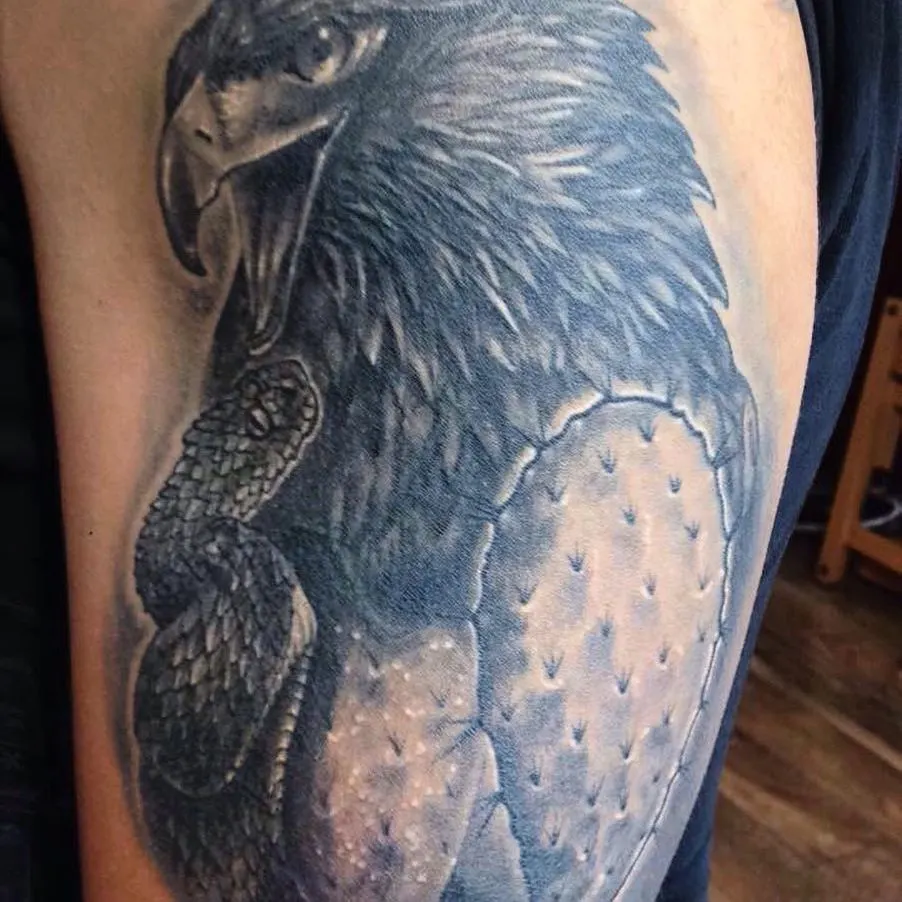
7. Tehuana Woman Tattoo
The Tehuana woman is an iconic image of Mexican culture, popularized by the famous painter Frida Kahlo. A Tehuana tattoo typically features a woman in traditional Tehuana attire, including a colorful embroidered dress and a floral headdress. This tattoo represents feminine strength, independence, and cultural pride. The vibrant colors and detailed patterns of the clothing and accessories make this tattoo a beautiful tribute to the powerful women of Mexican culture, often symbolizing the wearer’s connection to their roots and the importance of heritage.

8. Chicano Style Tattoo
Chicano tattoos are deeply rooted in the Mexican-American experience, often featuring themes of family, faith, and cultural pride. These tattoos are known for their bold black and gray shading, often incorporating religious imagery like the Virgin Mary, crosses, or praying hands. They may also include elements like roses, skulls, or Aztec symbols. Chicano tattoos are a powerful expression of identity and resilience, representing the struggles and triumphs of the Chicano community, while also showcasing the artistry and cultural significance of the style.
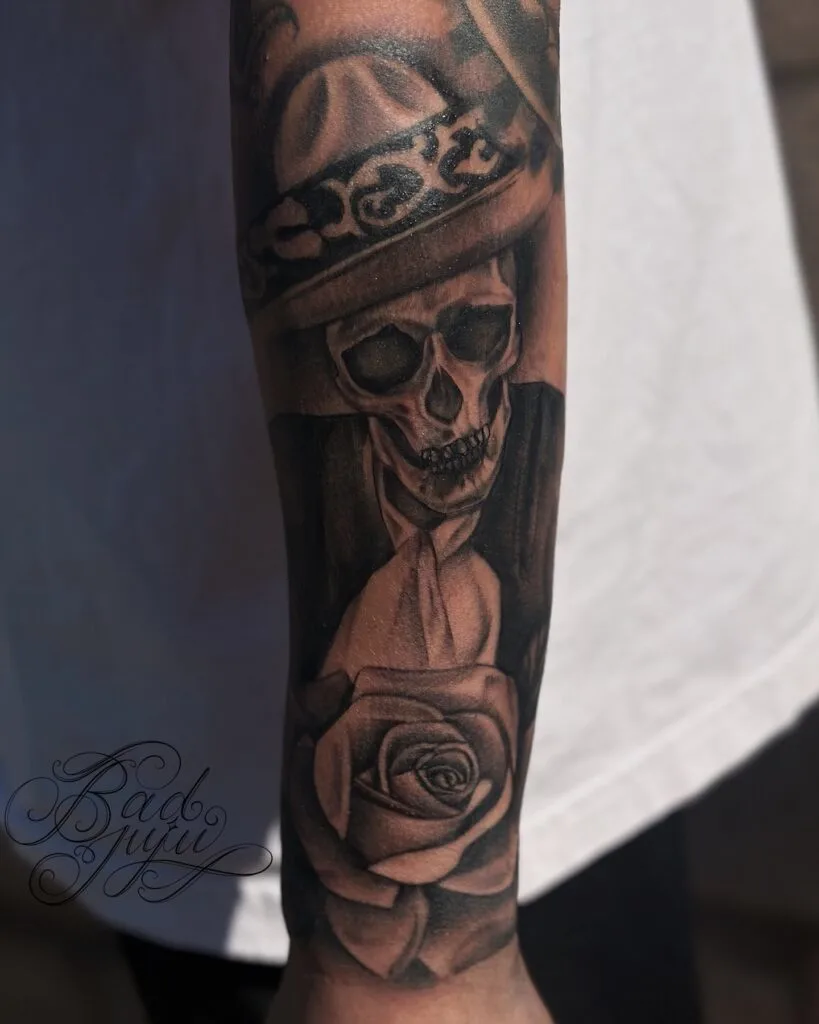
9. Lotería Card Tattoo
Lotería is a traditional Mexican game similar to bingo, but with illustrated cards. Each card features a different image, like La Sirena (The Mermaid), El Sol (The Sun), or El Corazón (The Heart), each with its own cultural significance. A Lotería card tattoo is a playful and colorful tribute to Mexican culture, often chosen for its personal meaning or connection to the imagery on the card. The designs are usually vibrant and stylized, making them a unique and nostalgic way to celebrate one’s heritage.

10. Mexican Revolution Tattoo
Mexican Revolution tattoos often depict iconic figures from the revolution, such as Pancho Villa or Emiliano Zapata, or symbols like rifles, flags, or the revolutionary slogan “Tierra y Libertad.” These tattoos represent the spirit of resistance, freedom, and the fight for justice. They are a tribute to the struggles of the Mexican people during the early 20th century and are often designed in a realistic or historical style, capturing the determination and courage of those who fought for their rights.
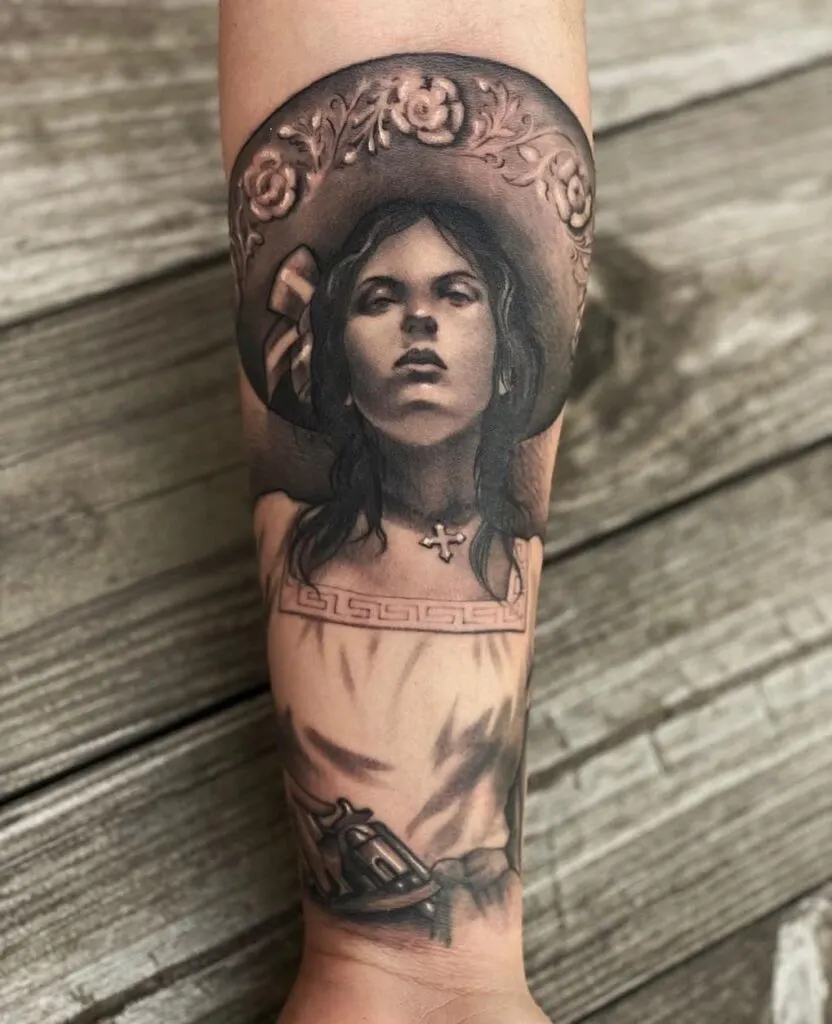
11. Frida Kahlo Portrait Tattoo
Frida Kahlo, the iconic Mexican painter, is celebrated for her self-portraits and exploration of identity, postcolonialism, and the female experience. A Frida Kahlo portrait tattoo often captures her intense gaze, signature unibrow, and vibrant flowers in her hair. This tattoo symbolizes resilience, artistic expression, and the beauty of imperfection. It’s a powerful tribute to a woman who transformed her pain into art and became a symbol of feminist and cultural pride, often depicted in bold, colorful styles that reflect Kahlo’s own use of vibrant colors.
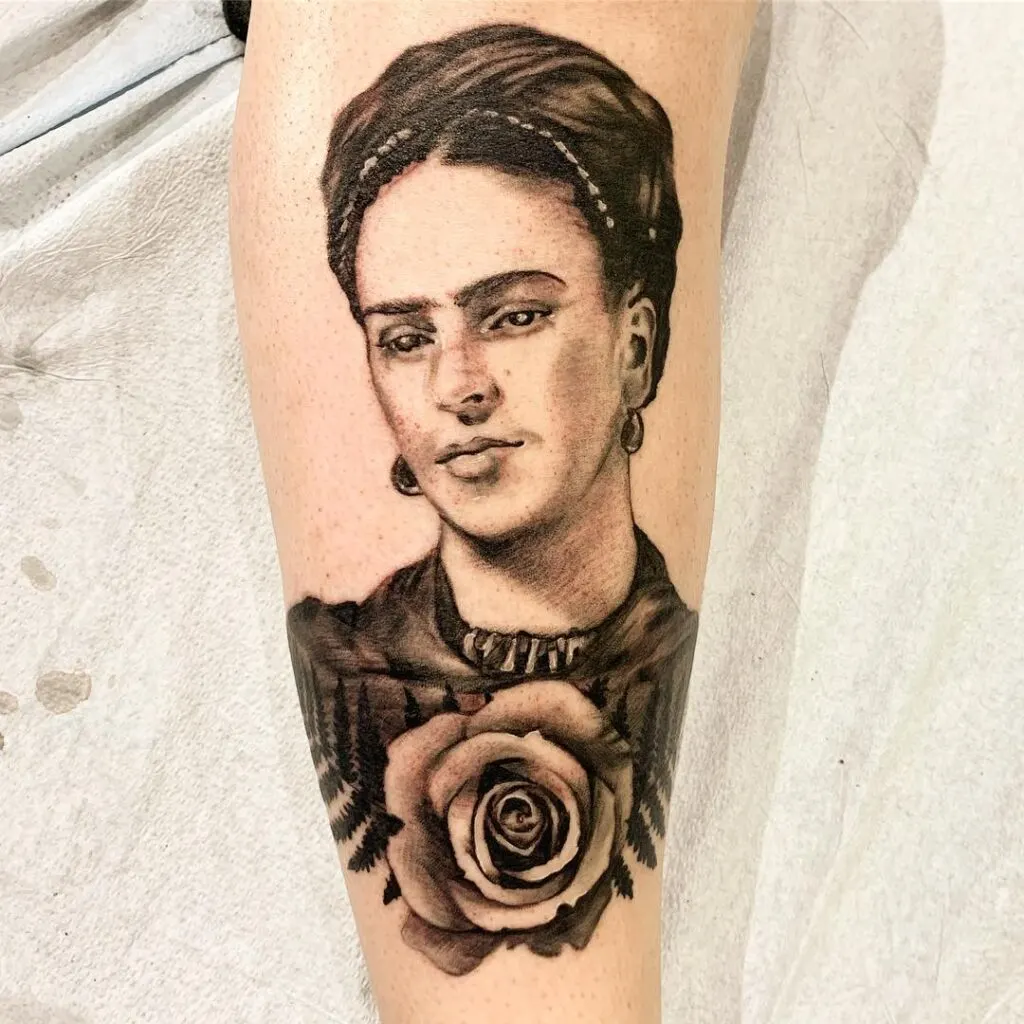
12. Papel Picado Tattoo
Papel picado is a traditional Mexican craft involving intricately cut paper banners used during celebrations like Día de los Muertos and Independence Day. A papel picado tattoo usually features delicate, lace-like patterns that evoke the festive and joyous spirit of Mexican culture. This tattoo is a celebration of life and the importance of community, often incorporating elements like flowers, skulls, or religious symbols. The design is usually colorful and detailed, representing the intricate artistry involved in creating papel picado and the cultural significance of these decorations.
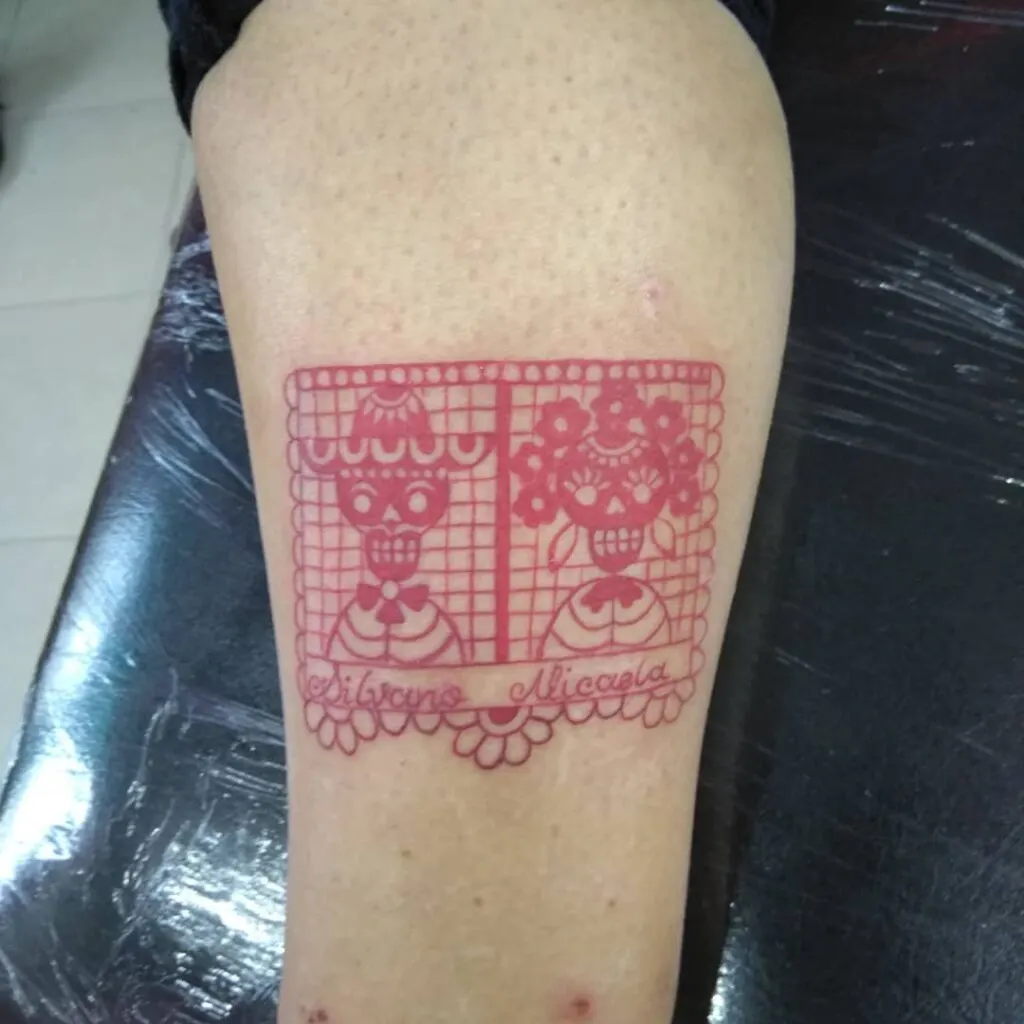
13. Mayahuel Tattoo
Mayahuel is the Aztec goddess of fertility and the maguey plant, from which tequila and pulque are derived. A Mayahuel tattoo often features the goddess emerging from the maguey plant, symbolizing nourishment, fertility, and the life-giving properties of the earth. This tattoo is rich in cultural symbolism, representing the connection between humanity and the natural world. It’s a popular choice for those who want to honor their heritage and the importance of agriculture in Mexican culture, often depicted with intricate details and vibrant colors.
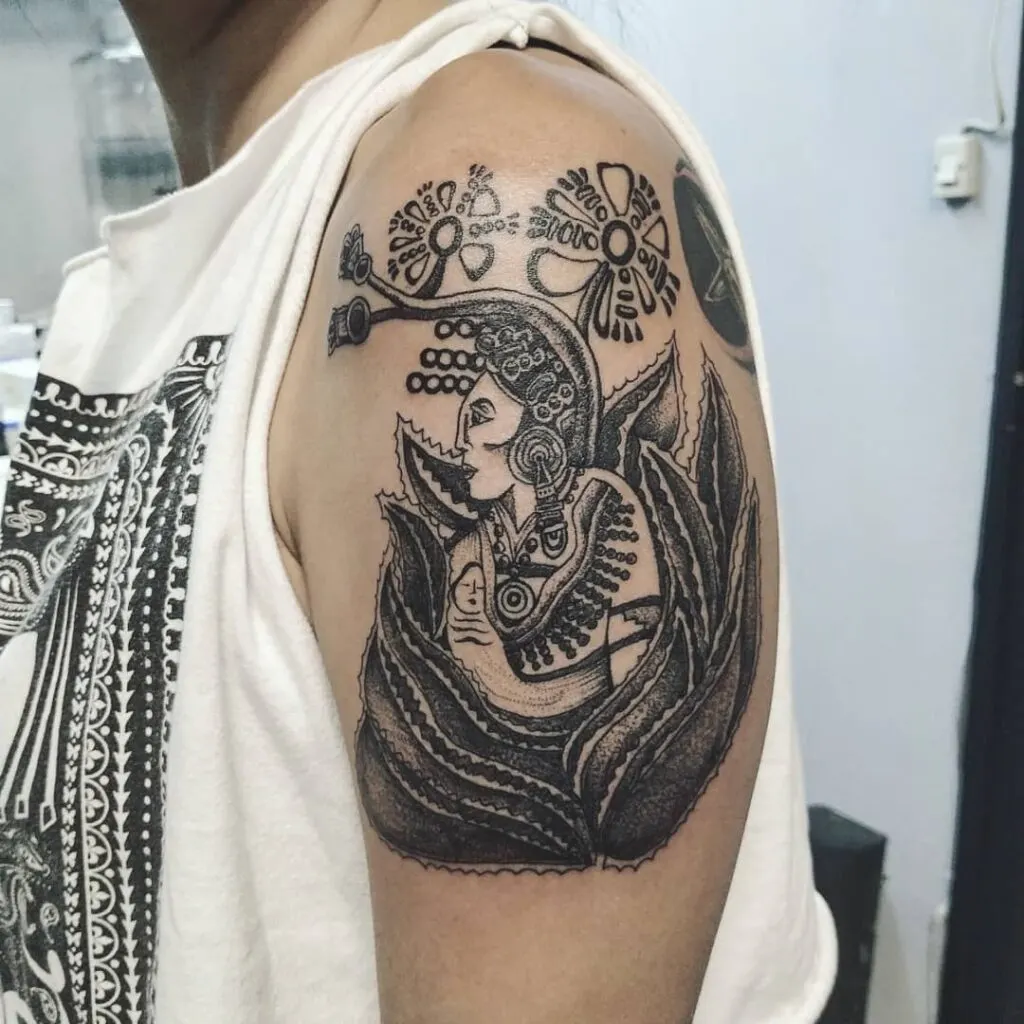
14. Mariachi Tattoo
Mariachi tattoos pay homage to the vibrant musical tradition of Mexico. These designs often feature musicians in traditional mariachi attire, complete with sombreros and charro suits, playing instruments like the guitar, trumpet, or violin. A mariachi tattoo symbolizes joy, cultural pride, and the importance of music in Mexican celebrations. The design is usually dynamic and lively, capturing the spirit of a mariachi performance, with intricate details on the musicians’ clothing and instruments, making it a festive and meaningful tribute to Mexican culture.
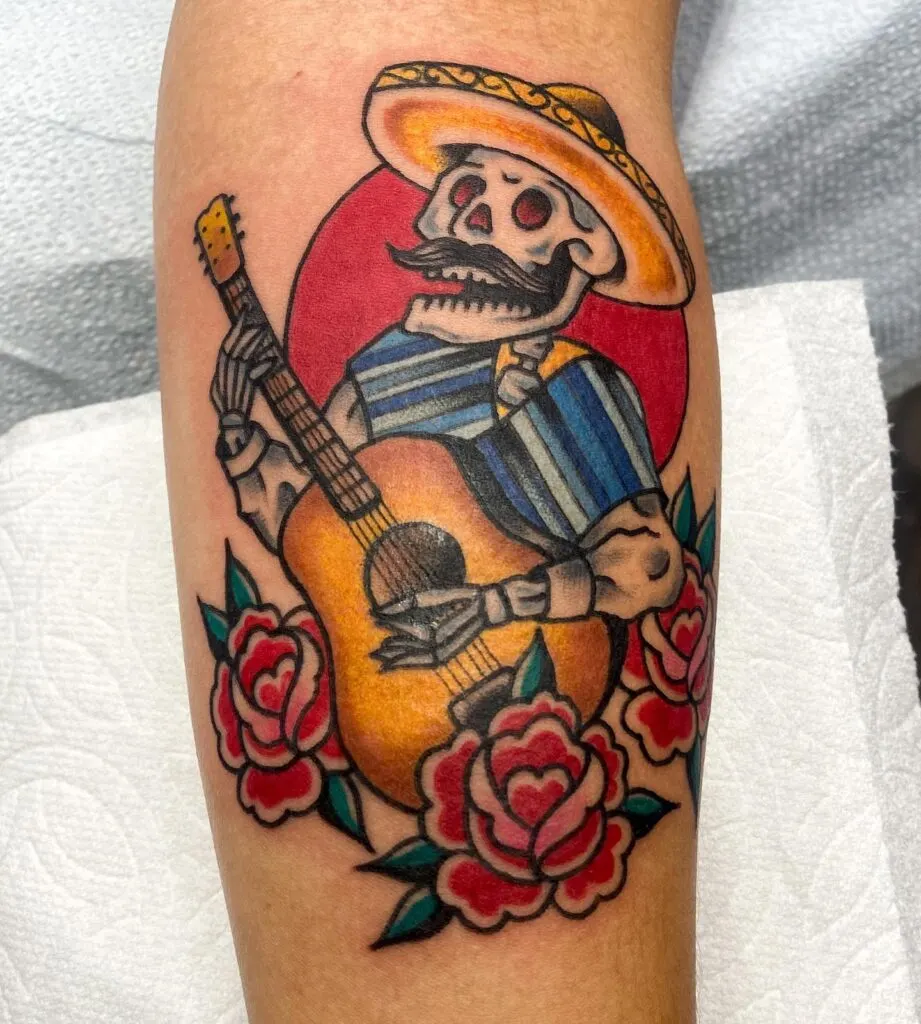
15. Mexican Folk Art Tattoo
Mexican folk art, or artesanía, is known for its vibrant colors and intricate patterns. A Mexican folk art tattoo often incorporates elements like alebrijes (colorful fantasy creatures), floral designs, or traditional pottery patterns. These tattoos are a celebration of the rich artistic traditions of Mexico, representing creativity, cultural pride, and the beauty of handmade crafts. The designs are usually colorful and detailed, reflecting the vibrant and diverse nature of Mexican folk art, making it a popular choice for those who want to showcase their love for Mexican culture.
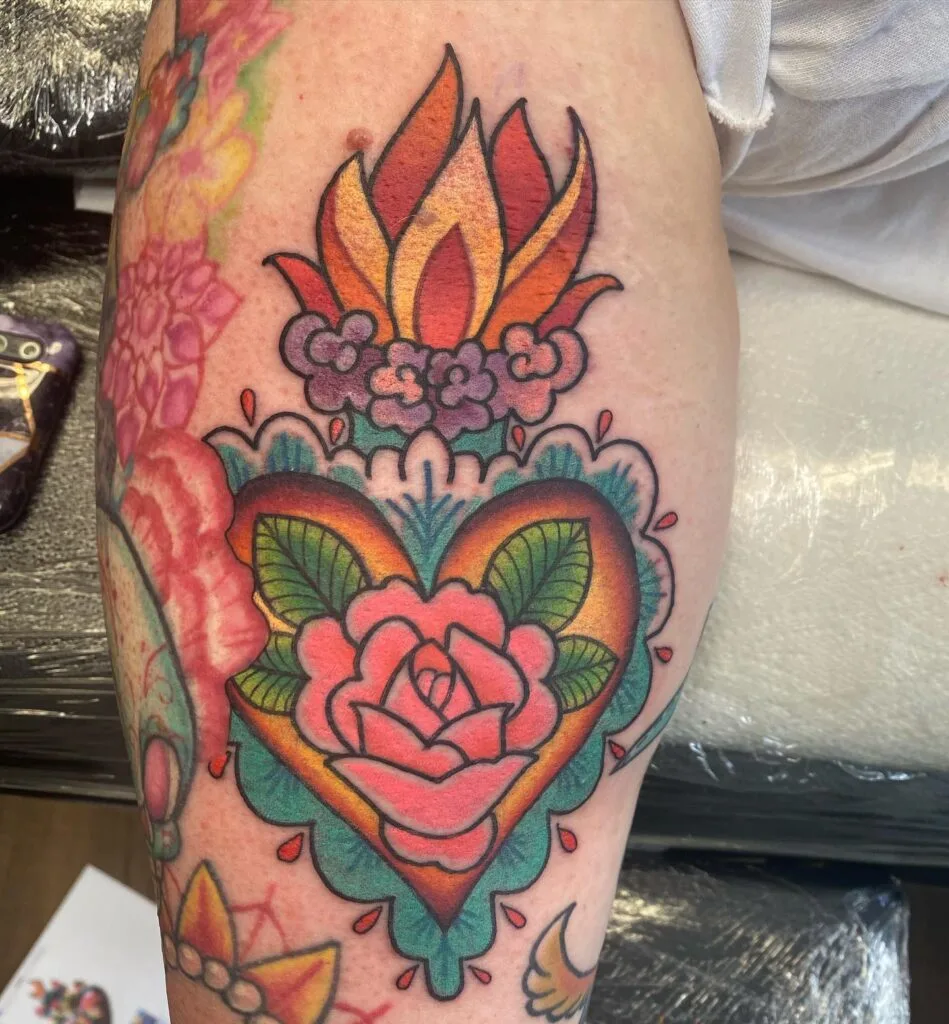
16. Tláloc Tattoo
Tláloc is the Aztec god of rain, fertility, and water. A Tláloc tattoo often features the god’s distinctive face, characterized by goggle-like eyes and fangs, sometimes surrounded by lightning or water imagery. This tattoo represents the life-giving and destructive power of nature, as Tláloc was both revered and feared. The design is typically bold and striking, symbolizing the essential role of water in sustaining life and the importance of respecting natural forces, making it a powerful symbol of the connection between humans and the environment.
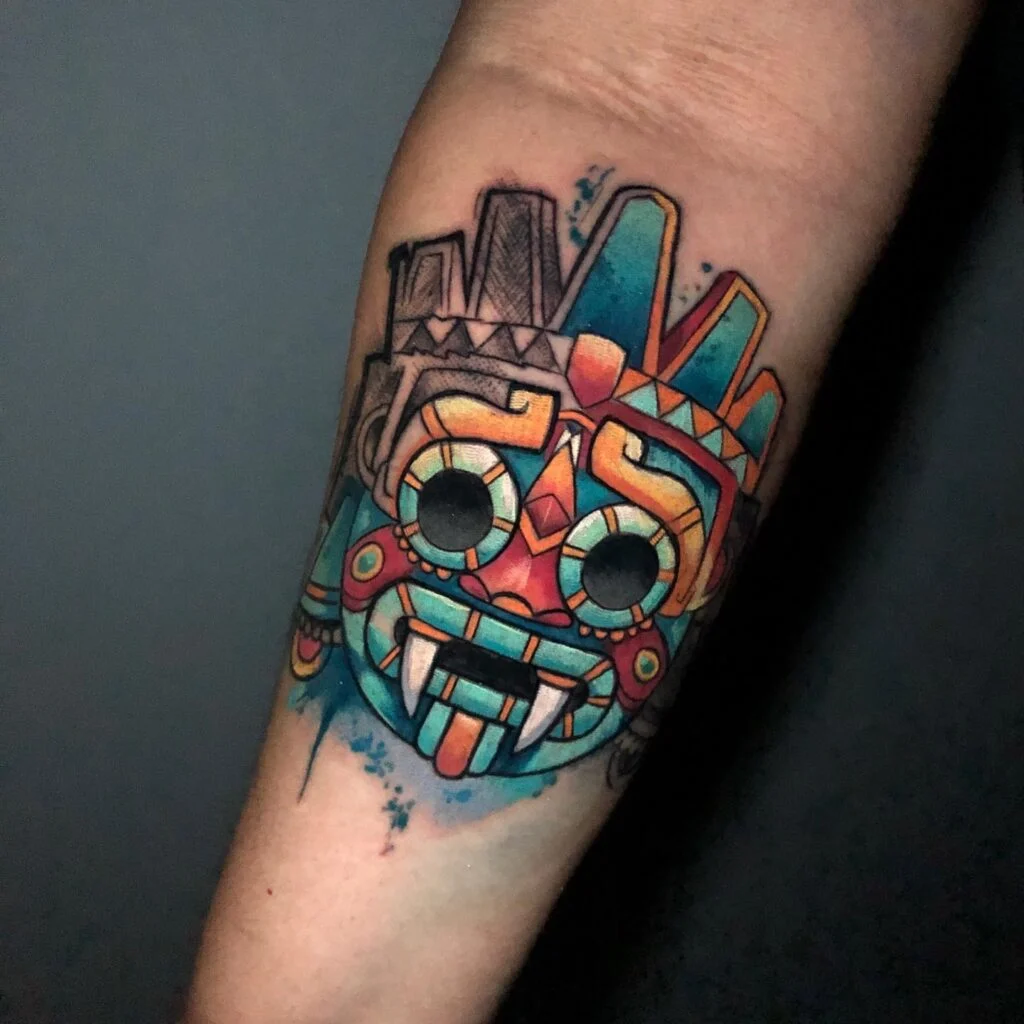
17. Mexican Serape Tattoo
The serape is a traditional Mexican shawl known for its colorful striped patterns. A Mexican serape tattoo often features these vibrant patterns, symbolizing warmth, protection, and cultural heritage. The design can be simple or elaborate, sometimes incorporating additional elements like flowers, skulls, or the Mexican flag. This tattoo is a tribute to the beauty of traditional Mexican textiles and the importance of cultural identity, often chosen by those who want to celebrate their roots in a colorful and meaningful way.
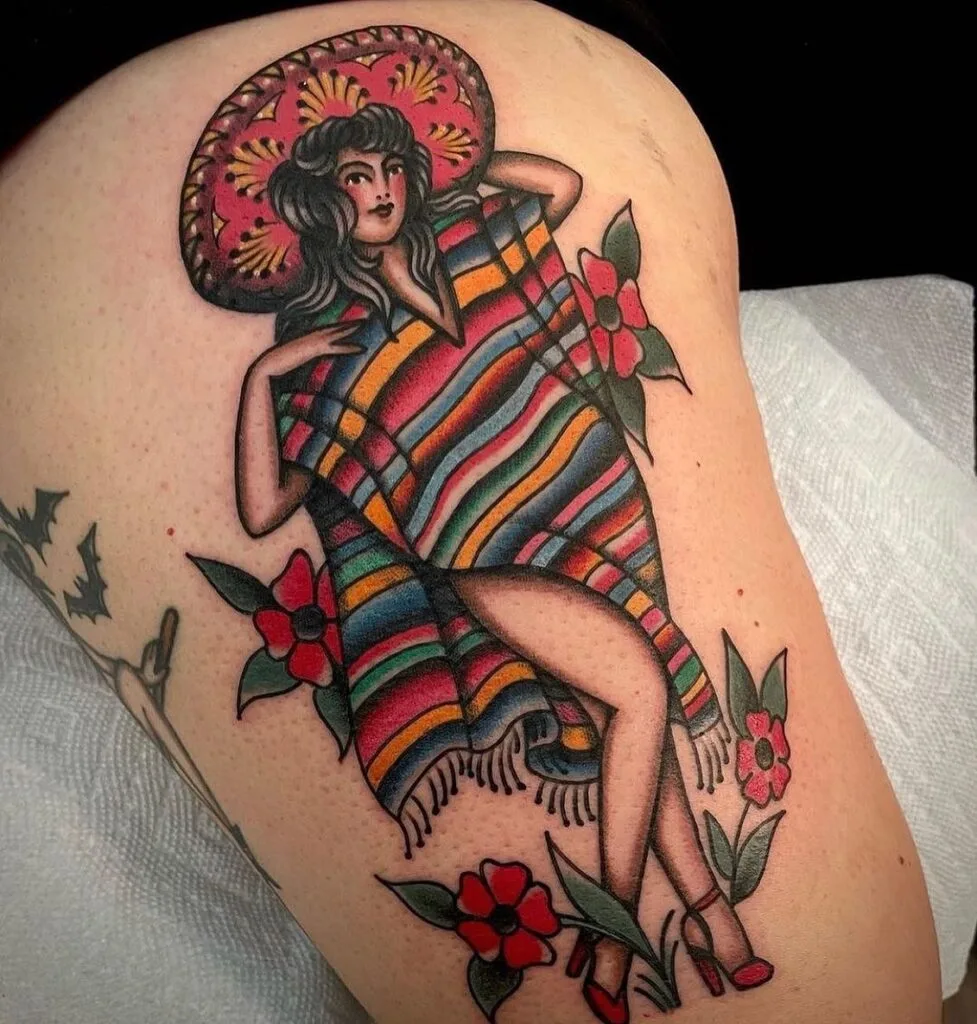
18. Mexican Eagle Tattoo
The Mexican eagle, often depicted with outstretched wings or in mid-flight, is a symbol of strength, freedom, and national pride. This tattoo design is typically inspired by theeagle from the Mexican flag, sometimes shown holding a snake or perched on a cactus. It represents the power and resilience of the Mexican people, as well as the country’s rich history and culture. The design is usually bold and dynamic, making it a powerful statement of identity and pride, often chosen by those who want to honor their heritage.

19. Day of the Dead Mask Tattoo
Day of the Dead masks, also known as calacas, are colorful and ornate, used during Día de los Muertos celebrations. A Day of the Dead mask tattoo often features vibrant colors, floral patterns, and skull imagery, symbolizing the celebration of life and the remembrance of loved ones who have passed away. The design is usually detailed and festive, capturing the joyful and reflective nature of the holiday. This tattoo is a tribute to the Mexican view of death as a natural part of life and the importance of honoring ancestors.

20. Zapata Moustache Tattoo
A Zapata mustache tattoo is a tribute to Emiliano Zapata, a key figure in the Mexican Revolution. The design often features a stylized or realistic depiction of Zapata’s iconic mustache, sometimes accompanied by other revolutionary symbols like rifles or the phrase “Tierra y Libertad.” This tattoo represents rebellion, justice, and the fight for the rights of the oppressed. It’s a powerful symbol of resistance and a reminder of the importance of standing up for what you believe in, making it a meaningful choice for those who admire Zapata’s legacy.
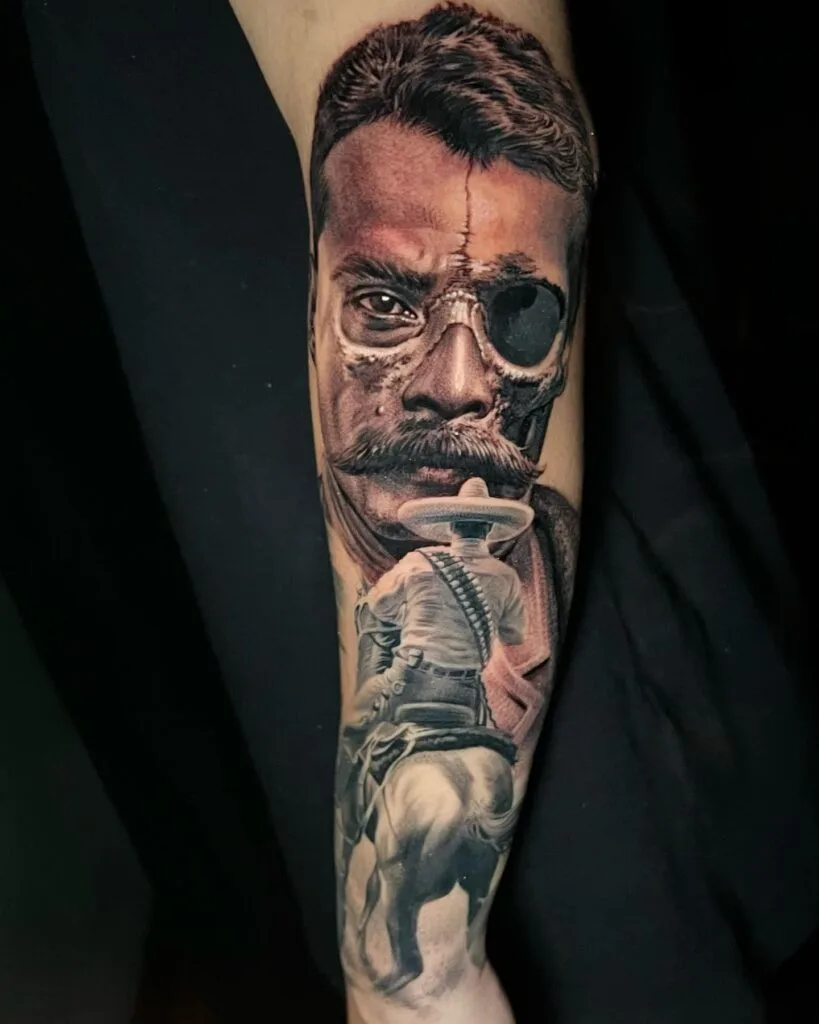
21. Guadalupe Rose Tattoo
The Guadalupe rose tattoo is a symbol of faith, love, and devotion, often associated with the Virgin of Guadalupe, the patron saint of Mexico. The design typically features a rose in full bloom, sometimes accompanied by an image of the Virgin Mary or a cross. This tattoo represents the connection between faith and nature, as well as the protective and nurturing qualities of the Virgin of Guadalupe. The design is usually elegant and detailed, making it a beautiful tribute to one’s spiritual beliefs and cultural heritage.

22. Mexican Tribal Tattoo
Mexican tribal tattoos are inspired by the ancient patterns and symbols used by indigenous tribes in Mexico, such as the Aztecs and Mayans. These designs often feature bold, geometric patterns, representing elements of nature, spirituality, and the cosmos. A Mexican tribal tattoo is a connection to one’s ancestral roots and a celebration of the rich cultural heritage of Mexico’s indigenous peoples. The design is typically striking and symbolic, making it a powerful statement of identity and pride, often chosen by those who want to honor their heritage in a meaningful way.
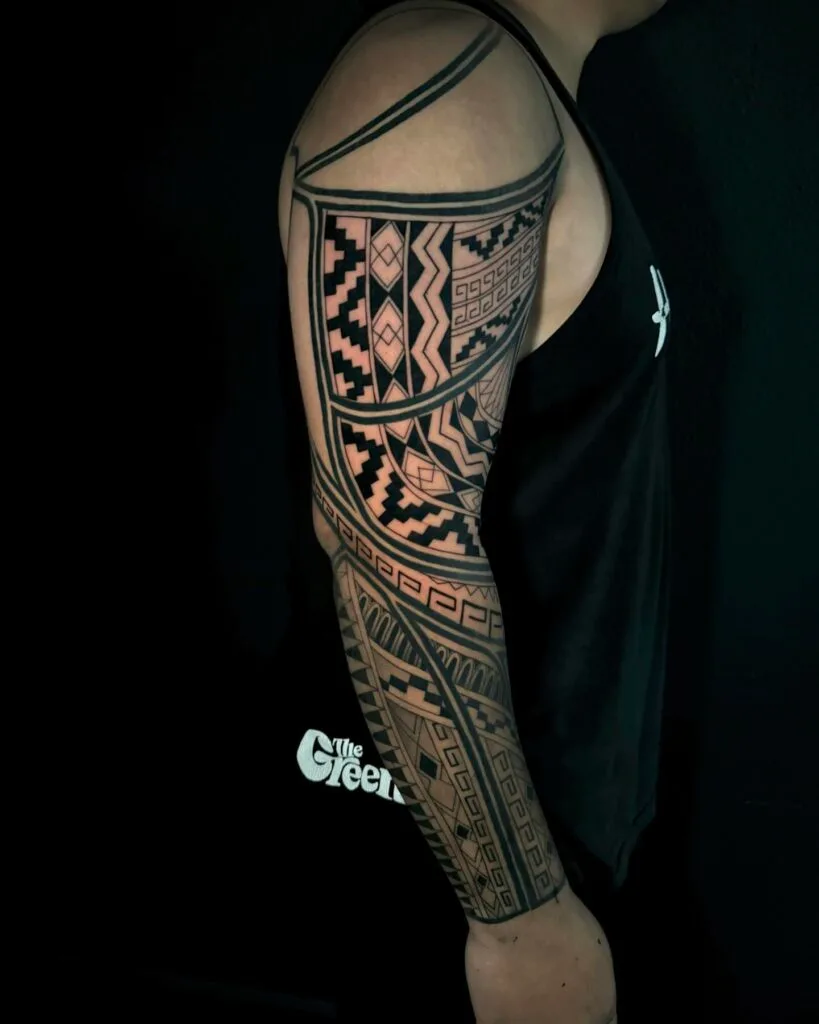
23. Mexican Flag Tattoo
A Mexican flag tattoo is a symbol of patriotism and national pride. The design typically features the flag’s green, white, and red stripes, along with the eagle, cactus, and snake emblem in the center. Some variations include additional elements like the Mexican coat of arms or the phrase “Viva México.” This tattoo represents love for one’s country and the pride in Mexican heritage. The design is usually bold and colorful, making it a strong statement of identity and loyalty to Mexico, often chosen by those who want to show their pride in their roots.
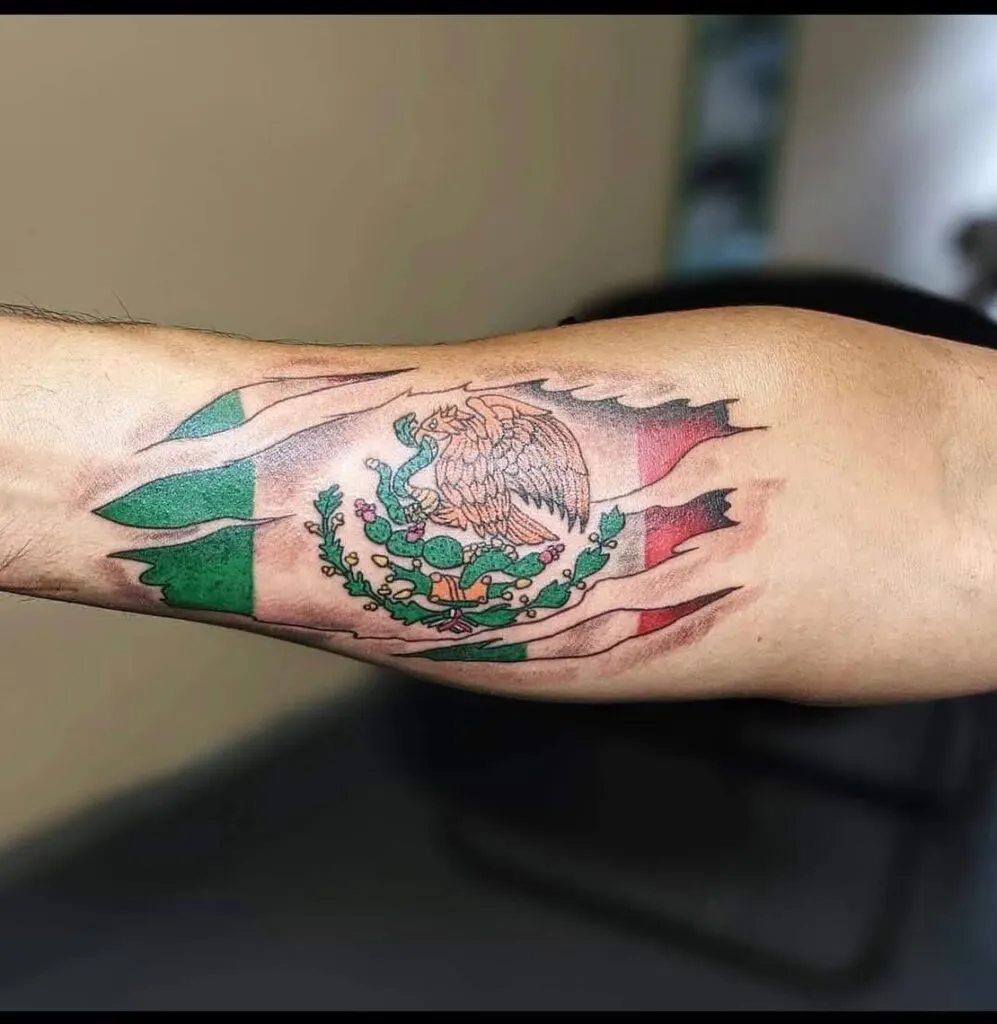
24. Mexican Sugar Skull Girl Tattoo
The Mexican sugar skull girl tattoo combines the iconic sugar skull imagery with a feminine portrait, often representing the duality of life and death. The design typically features a beautiful woman’s face painted with Day of the Dead makeup, adorned with flowers, and sometimes with elements like candles or crosses. This tattoo symbolizes the beauty of life and the inevitability of death, as well as the importance of remembering and honoring those who have passed. The design is usually detailed and artistic, making it a powerful and meaningful tribute to Mexican culture.
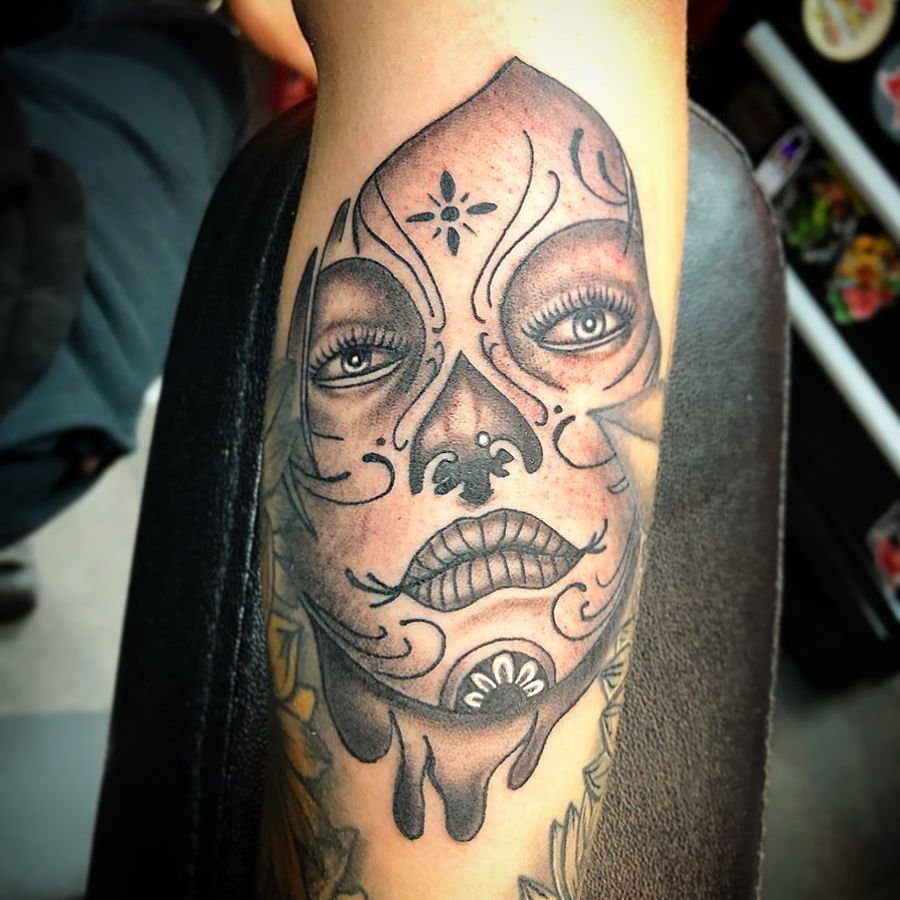
25. Mexican Aztec Calendar Tattoo
The Aztec calendar, also known as the Sun Stone, is a symbol of time, cosmology, and the cycles of life. A Mexican Aztec calendar tattoo typically features the intricate design of the calendar, with its detailed carvings and representations of the days, months, and deities. This tattoo represents the deep connection between the Aztecs and their understanding of the universe, as well as the importance of time and the cycles of life. The design is usually intricate and detailed, making it a powerful and symbolic tribute to ancient Mexican culture.
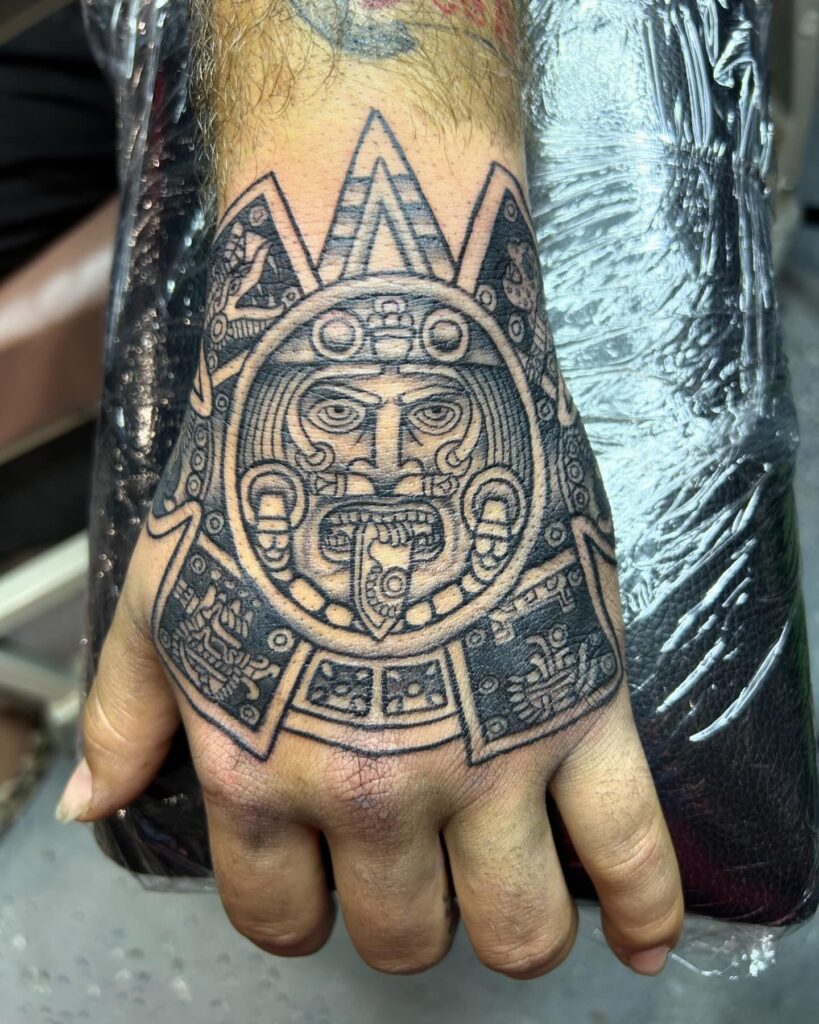
26. Chihuahua Tattoo
A Chihuahua tattoo represents loyalty, love, and the connection to Mexican heritage, as the Chihuahua is a breed that originated in Mexico. The design often features a realistic or stylized depiction of the dog, sometimes accompanied by elements like flowers, hearts, or the Mexican flag. This tattoo symbolizes the bond between humans and animals, as well as the importance of family and loyalty. The design is usually small and detailed, making it a cute and meaningful tribute to a beloved pet or to one’s Mexican roots.
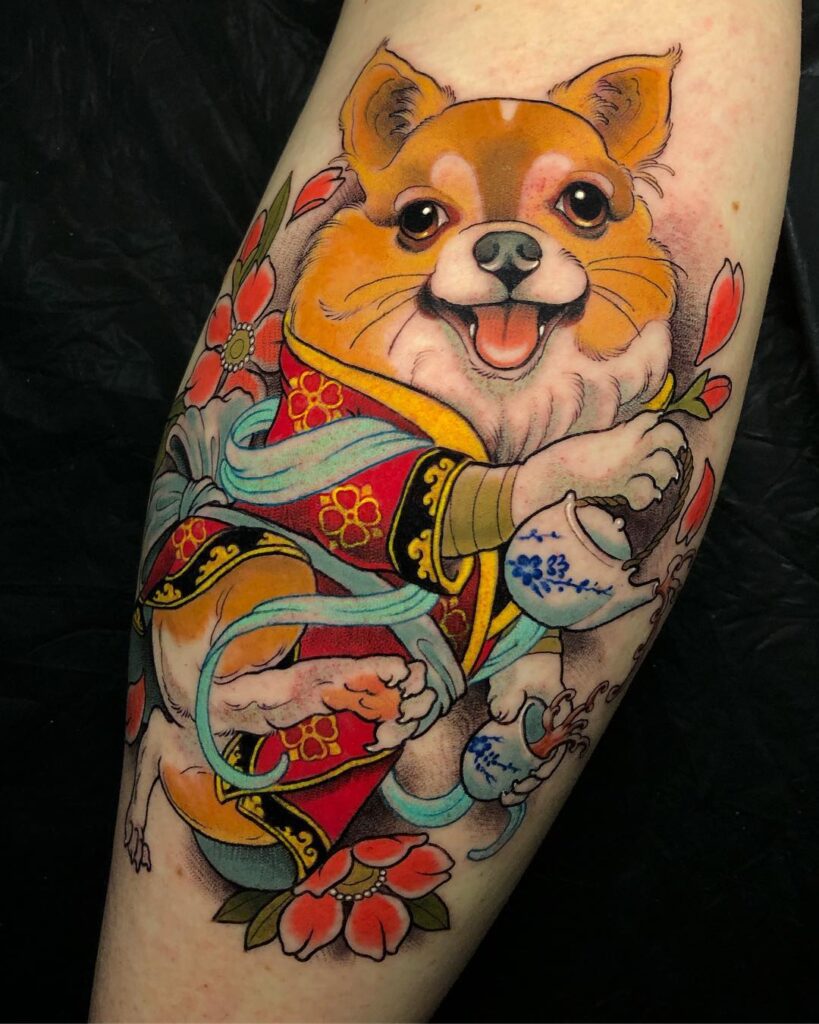
27. Nopal Cactus Tattoo
The nopal cactus is a symbol of resilience, survival, and the connection to the Mexican landscape. A nopal cactus tattoo typically features the prickly pear cactus, sometimes with elements like flowers, fruits, or the Mexican flag. This tattoo represents the ability to thrive in difficult conditions, as well as the importance of staying true to one’s roots. The design is usually simple and natural, making it a meaningful and symbolic tribute to the strength and resilience of the Mexican people and their connection to the land.
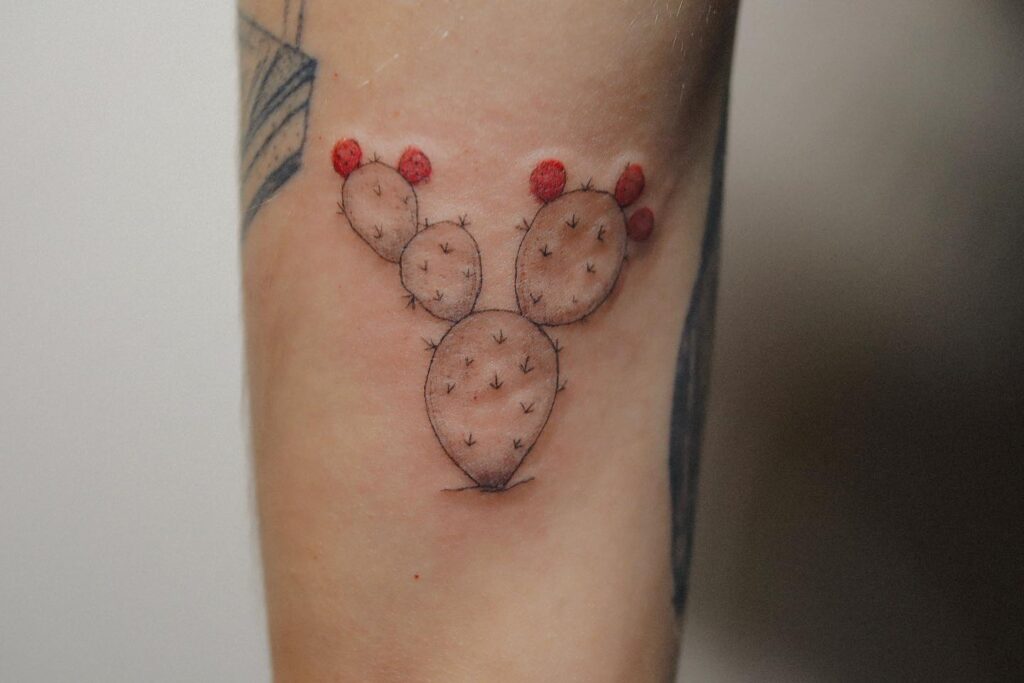
28. Mexican Textile Pattern Tattoo
Mexican textile patterns, known for their vibrant colors and intricate designs, are a symbol of cultural heritage and artistic expression. A Mexican textile pattern tattoo often features traditional patterns from regions like Oaxaca or Chiapas, incorporating elements like flowers, animals, or geometric shapes. This tattoo represents the beauty and creativity of Mexican craftsmanship, as well as the importance of preserving cultural traditions. The design is usually colorful and detailed, making it a unique and meaningful tribute to Mexican culture and the artistry of its people.
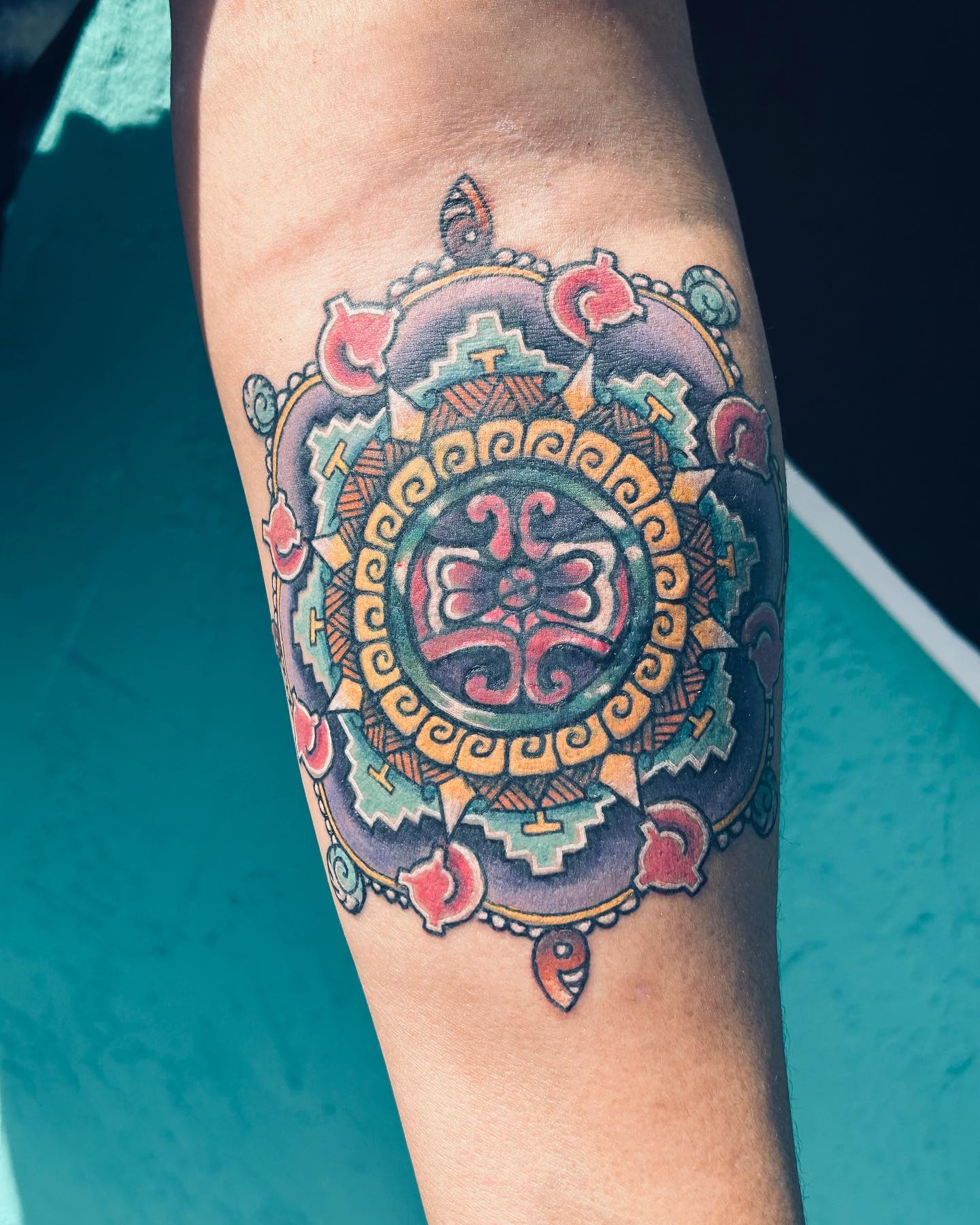
29. Virgin of Guadalupe Tattoo
The Virgin of Guadalupe is a symbol of faith, protection, and cultural pride in Mexico. A Virgin of Guadalupe tattoo typically features the image of the Virgin Mary surrounded by rays of light, often accompanied by roses or a cross. This tattoo represents the importance of faith in Mexican culture, as well as the protective and nurturing qualities of the Virgin. The design is usually detailed and elegant, making it a powerful and spiritual tribute to one’s beliefs and cultural heritage, often chosen by those who want to honor their devotion to the Virgin of Guadalupe.
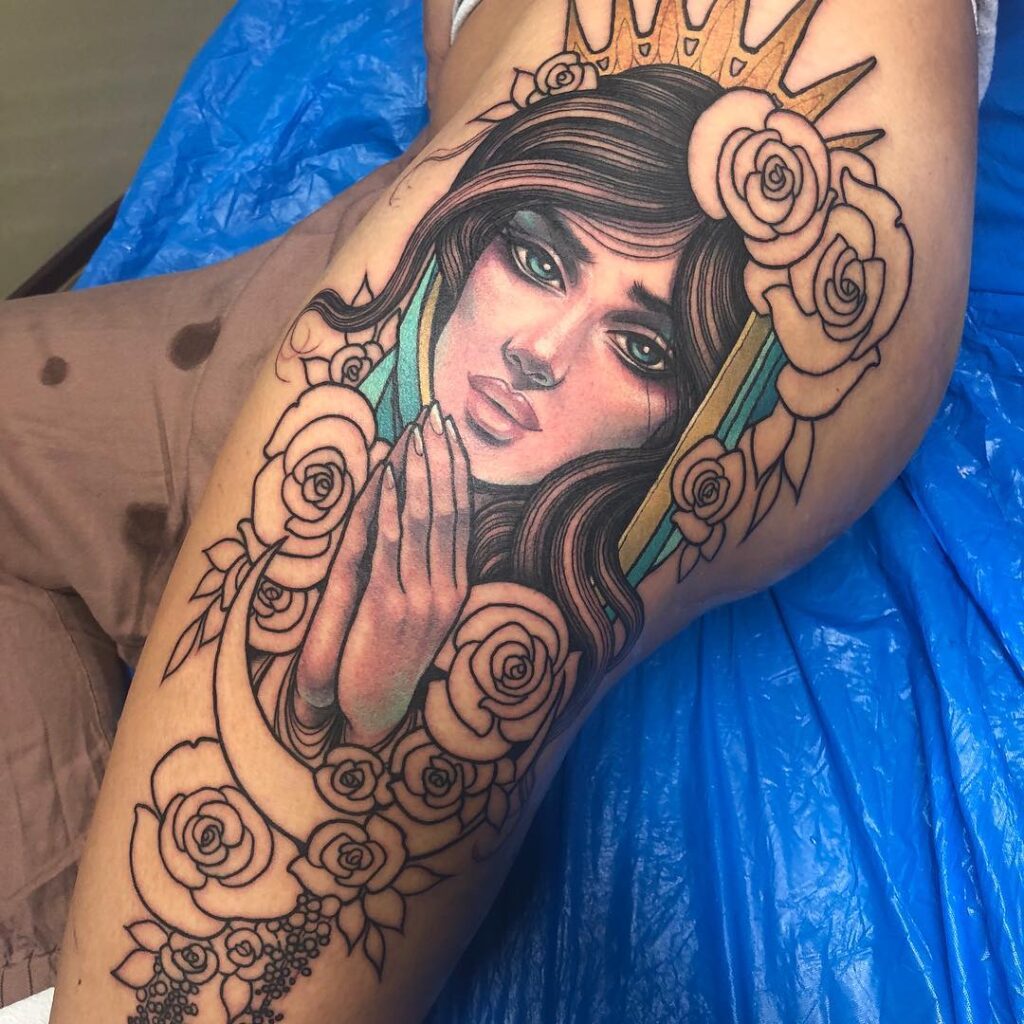
30. Mexican Skeleton Tattoo
Mexican skeleton tattoos are often associated with Día de los Muertos and symbolize the celebration of life and the acceptance of death. The design typically features a skeleton in a lively or festive pose, sometimes wearing traditional Mexican clothing or surrounded by flowers. This tattoo represents the Mexican view of death as a natural part of life and the importance of remembering and honoring those who have passed. The design is usually playful and detailed, making it a joyful and meaningful tribute to Mexican culture and the cycle of life and death.
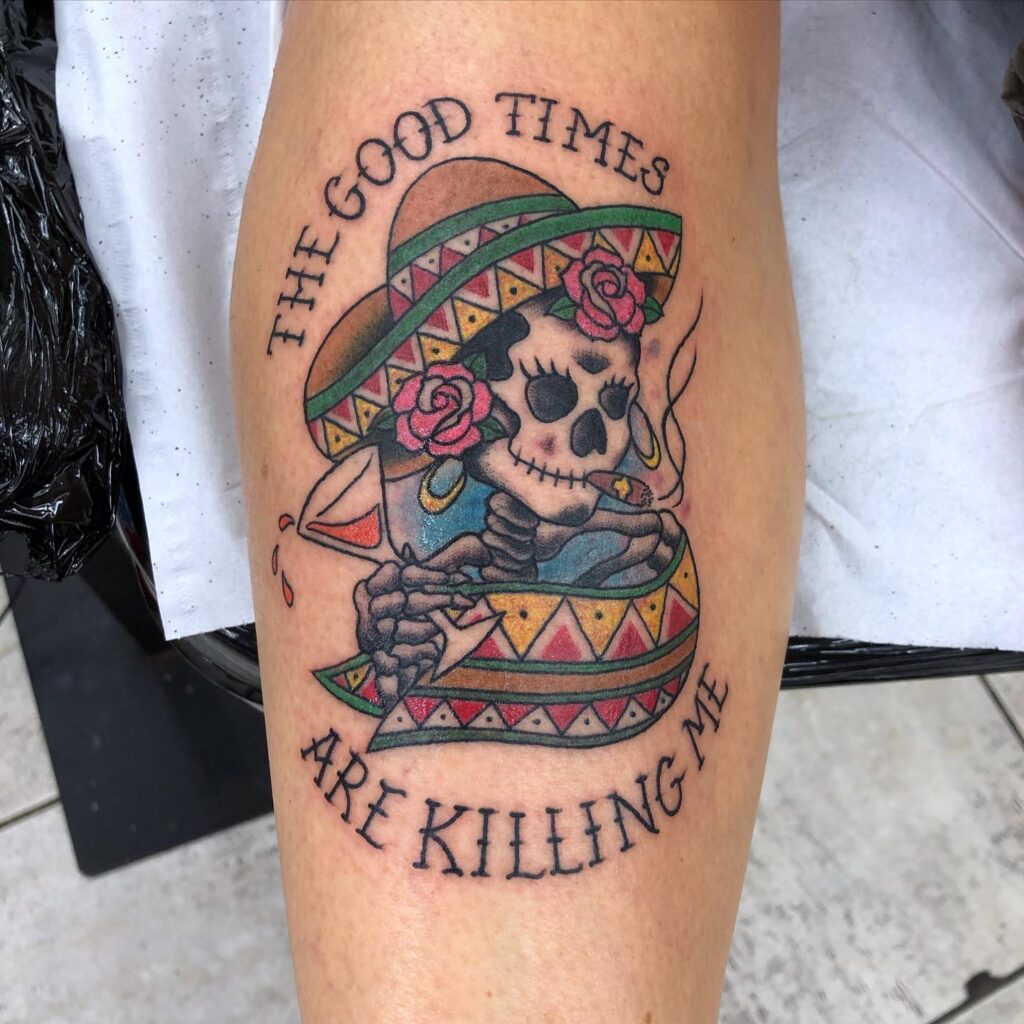
31. Cempasúchil Flower Tattoo
The cempasúchil flower, also known as the marigold, is a symbol of death and the afterlife in Mexican culture, often used during Día de los Muertos celebrations. A cempasúchil flower tattoo typically features the bright orange and yellow petals of the marigold, sometimes accompanied by skulls or other Day of the Dead imagery. This tattoo represents the connection between the living and the dead, as well as the importance of honoring ancestors. The design is usually vibrant and detailed, making it a meaningful and colorful tribute to the Mexican view of death and the celebration of life.
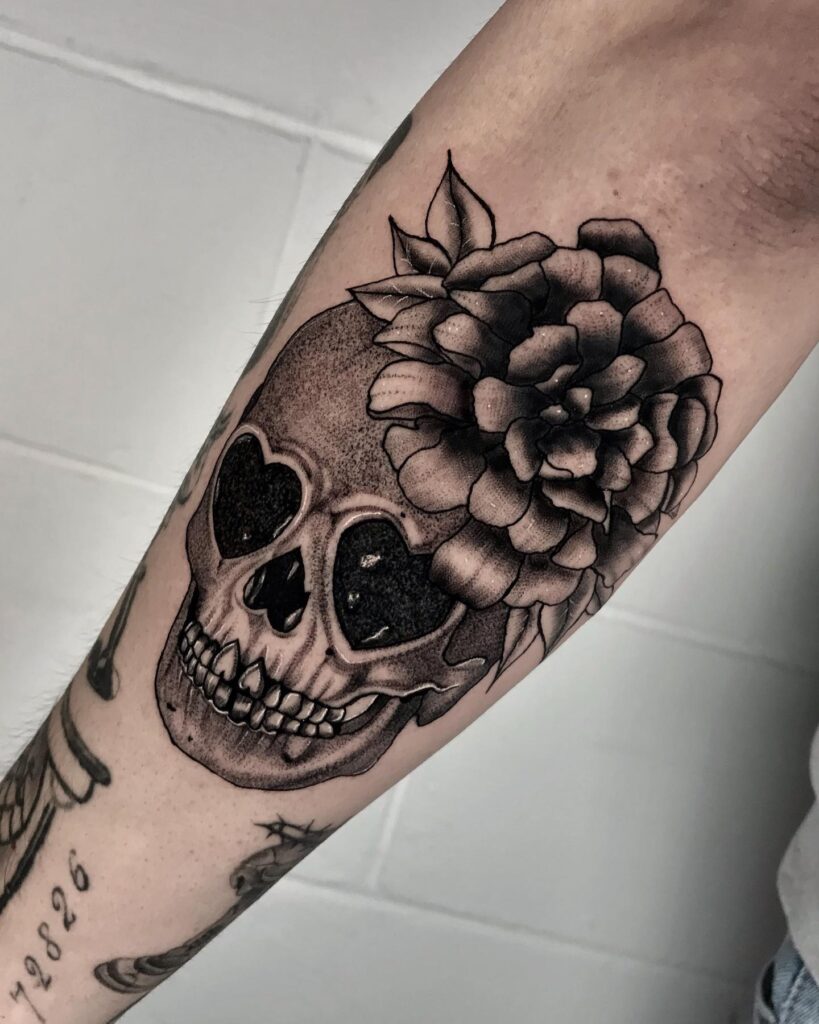
32. Mexican Rodeo (Charro) Tattoo
The charro, or Mexican cowboy, is a symbol of bravery, tradition, and cultural pride. A Mexican rodeo tattoo typically features a charro in traditional attire, including a sombrero, charro suit, and spurs, often shown riding a horse or performing a lasso trick. This tattoo represents the rich history of Mexican horsemanship and the importance of tradition and skill in Mexican culture. The design is usually dynamic and detailed, capturing the spirit of the rodeo and the pride in Mexican heritage, making it a powerful tribute to one’s roots and cultural identity.
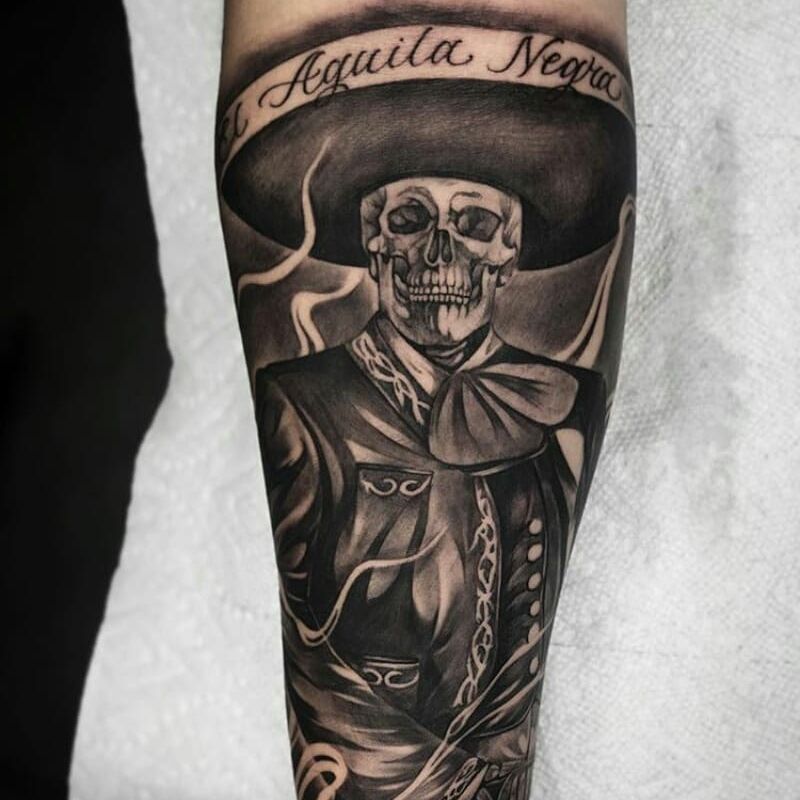
33. Mexican Corn (Maize) Tattoo
Corn, or maize, is a staple of Mexican cuisine and a symbol of life and sustenance in Mexican culture. A Mexican corn tattoo typically features an ear of corn, sometimes with elements like flowers, the sun, or the Mexican flag. This tattoo represents the importance of agriculture and the connection between humanity and the earth, as well as the role of corn in Mexican history and daily life. The design is usually simple and natural, making it a meaningful and symbolic tribute to the importance of sustenance and the connection to the land.
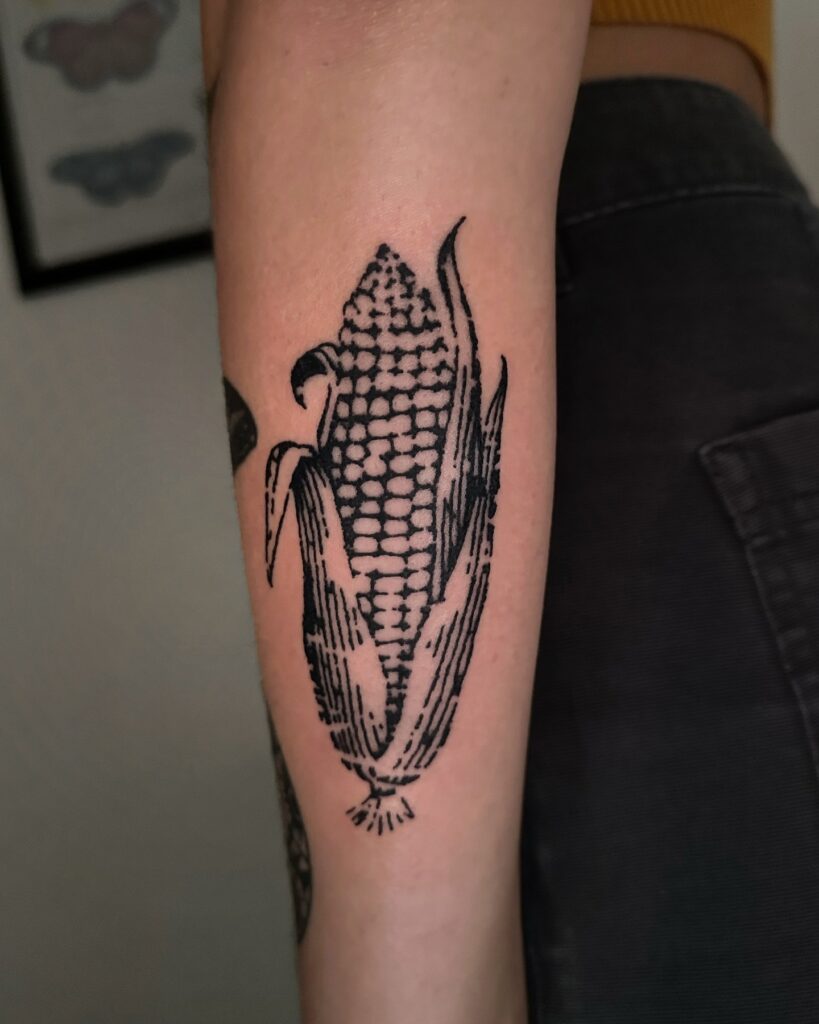
34. Mexican Wrestling (Lucha Libre) Tattoo
Lucha libre, or Mexican wrestling, is a beloved sport and cultural phenomenon in Mexico. A lucha libre tattoo typically features a masked wrestler, known as a luchador, in a dynamic pose, often accompanied by elements like stars, lightning bolts, or the Mexican flag. This tattoo represents the spirit of competition, strength, and the importance of entertainment in Mexican culture. The design is usually bold and colorful, capturing the excitement and energy of lucha libre, making it a fun and meaningful tribute to this unique aspect of Mexican culture.
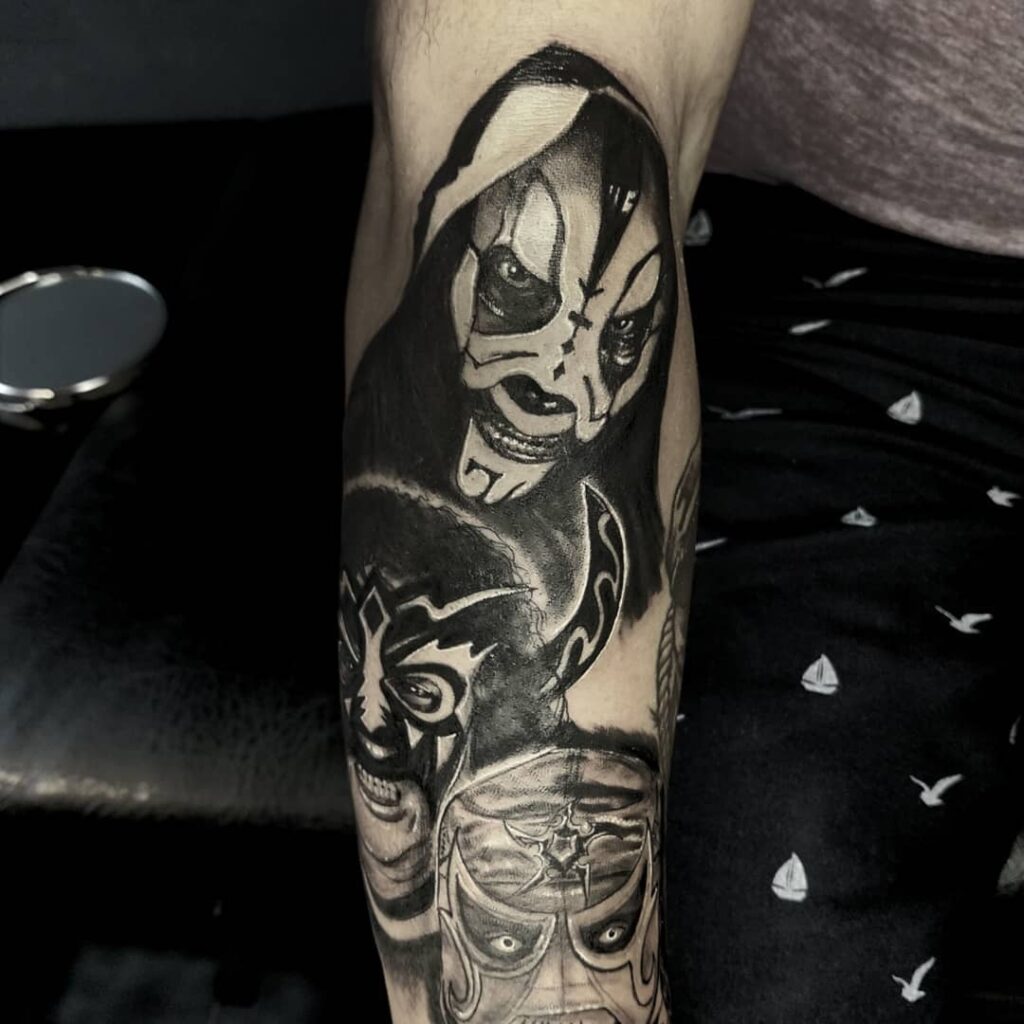
35. Mexican Flag Heart Tattoo
A Mexican flag heart tattoo is a symbol of love, pride, and patriotism. The design typically features a heart filled with the colors and emblem of the Mexican flag, sometimes accompanied by additional elements like flowers, a banner with a meaningful phrase, or the Mexican eagle. This tattoo represents the deep connection to one’s country and the pride in Mexican heritage, as well as the importance of family and love. The design is usually simple yet powerful, making it a meaningful and emotional tribute to one’s roots and cultural identity.

36. Mexican Folk Dance Tattoo
Mexican folk dance, known as baile folklórico, is a vibrant and colorful expression of Mexican culture. A Mexican folk dance tattoo typically features a dancer in traditional attire, such as the wide, flowing skirts and colorful dresses worn during performances. The design often captures the movement and energy of the dance, symbolizing joy, cultural pride, and the importance of tradition in Mexican life. The tattoo is usually dynamic and detailed, making it a lively and meaningful tribute to the rich artistic traditions of Mexico and the importance of cultural expression.
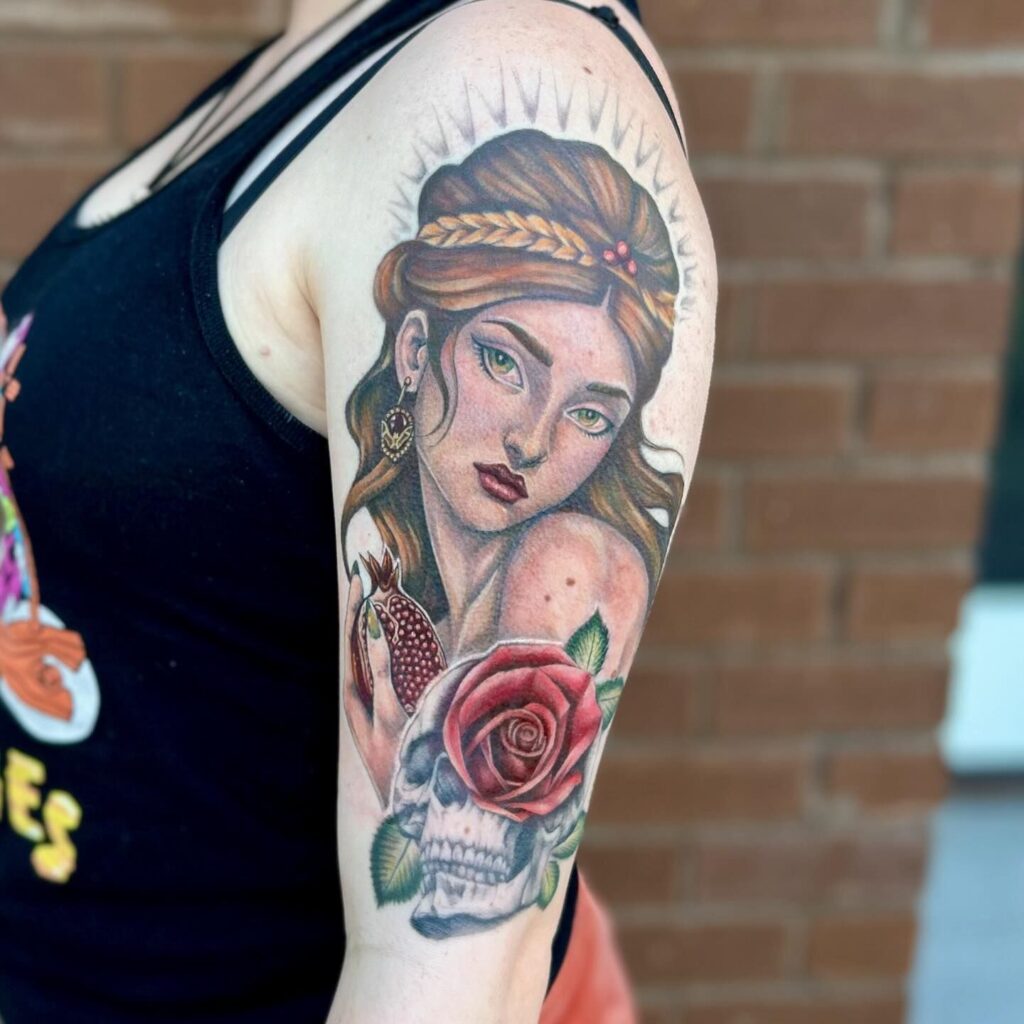
37. Mexican Sacred Heart Tattoo
The Sacred Heart, or Sagrado Corazón, is a symbol of divine love, compassion, and devotion in Mexican Catholicism. A Mexican Sacred Heart tattoo typically features a heart surrounded by flames, thorns, and rays of light, sometimes accompanied by a cross or the Virgin Mary. This tattoo represents the importance of faith, the power of love, and the idea of spiritual protection. The design is usually detailed and symbolic, making it a powerful and meaningful tribute to one’s religious beliefs and the significance of the Sacred Heart in Mexican culture.
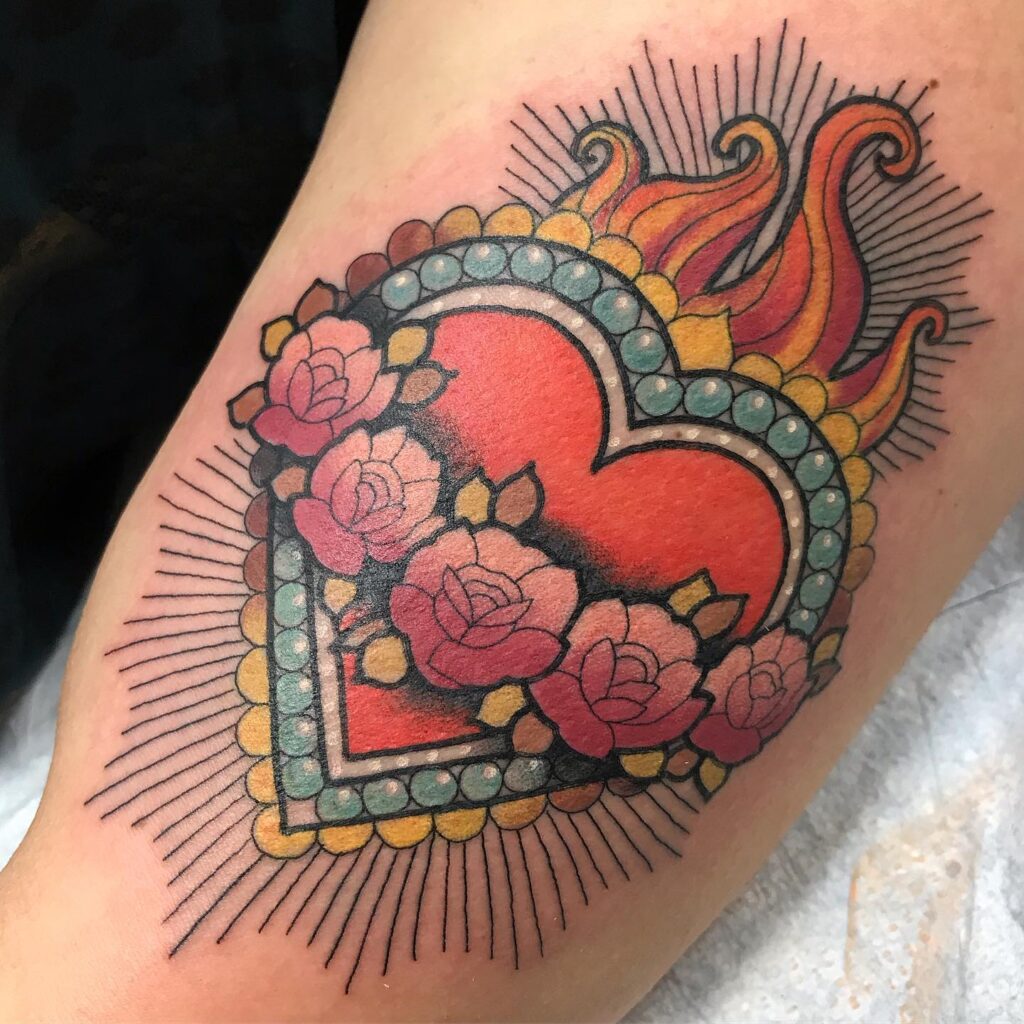
38. Mexican Mariachi Skull Tattoo
The mariachi skull tattoo combines the elements of Day of the Dead and Mexican musical traditions. The design typically features a skull wearing a mariachi hat, playing an instrument, or surrounded by musical notes and flowers. This tattoo symbolizes the celebration of life, the importance of music in Mexican culture, and the connection between the living and the dead. The design is usually vibrant and detailed, capturing the joy and festivity of both mariachi music and Día de los Muertos, making it a lively and meaningful tribute to Mexican culture.
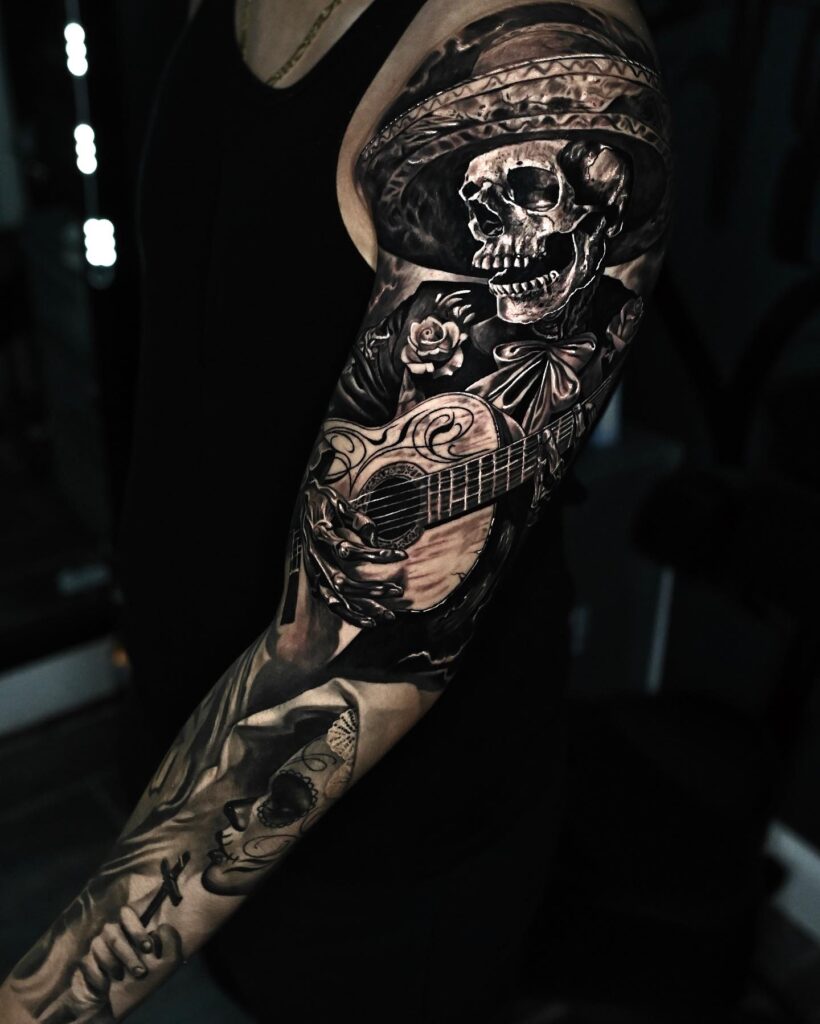
39. Aztec Sun God (Tonatiuh) Tattoo
Tonatiuh is the Aztec god of the sun and a symbol of power, energy, and life. An Aztec Sun God tattoo typically features the face of Tonatiuh surrounded by rays of light, often depicted in a stylized or geometric design. This tattoo represents the importance of the sun in Aztec cosmology and the belief in the sun’s life-giving properties. The design is usually bold and intricate, making it a powerful and symbolic tribute to ancient Mexican culture and the connection between humanity and the cosmos, often chosen by those who want to honor their heritage and the power of the sun.
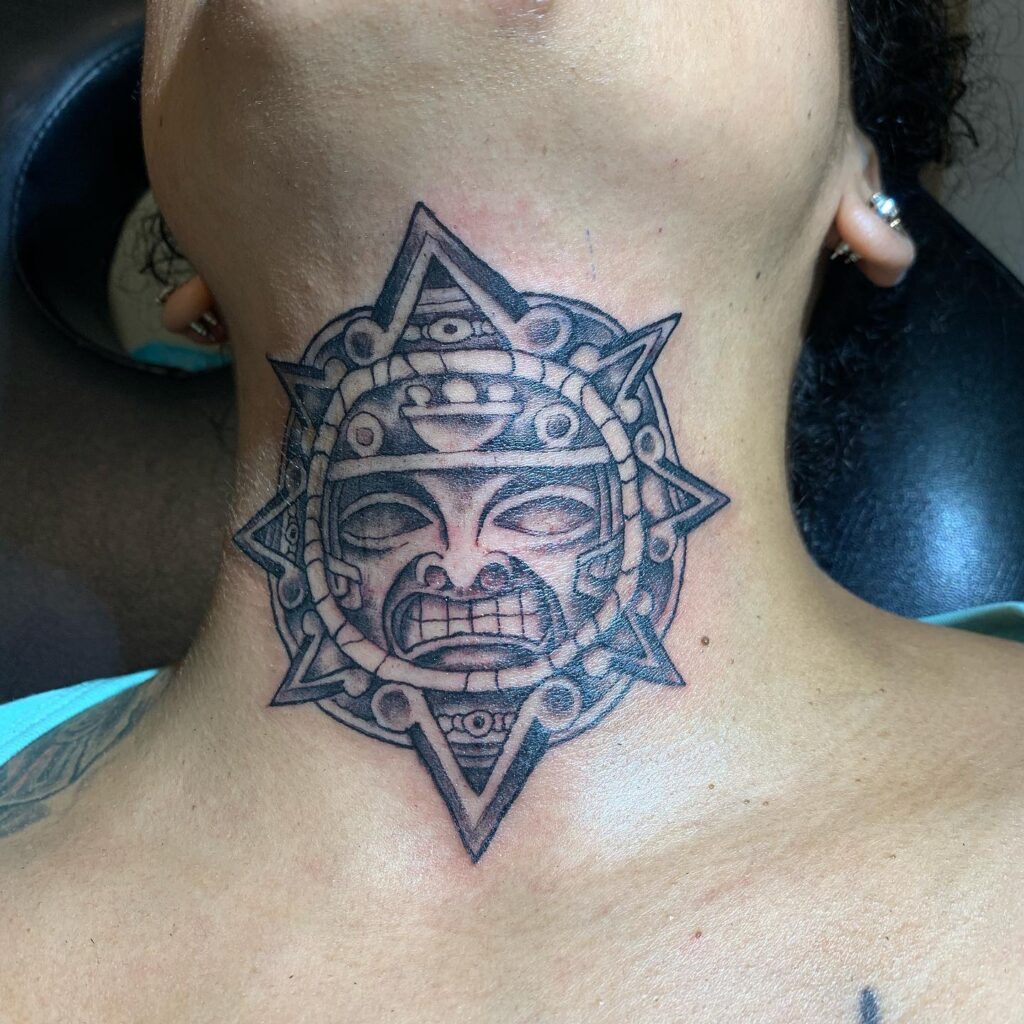
40. Mexican Rose Tattoo
The rose is a symbol of love, beauty, and passion in Mexican culture. A Mexican rose tattoo typically features a rose in full bloom, sometimes accompanied by elements like thorns, the Mexican flag, or a banner with a meaningful phrase. This tattoo represents the importance of love and the connection to one’s roots, as well as the beauty and resilience of the Mexican people. The design is usually elegant and detailed, making it a timeless and meaningful tribute to love, beauty, and cultural pride.

41. Aztec Eagle Warrior Tattoo
The Aztec Eagle Warrior was a prestigious class of warrior in the Aztec army, symbolizing bravery, strength, and honor. An Aztec Eagle Warrior tattoo typically features a warrior adorned in eagle feathers, carrying a shield and spear, sometimes with elements like the sun or the Mexican flag. This tattoo represents the values of courage and sacrifice, as well as the importance of defending one’s people and culture. The design is usually bold and detailed, making it a powerful and symbolic tribute to the ancient traditions of the Aztec warriors and the importance of honor and strength in Mexican culture.
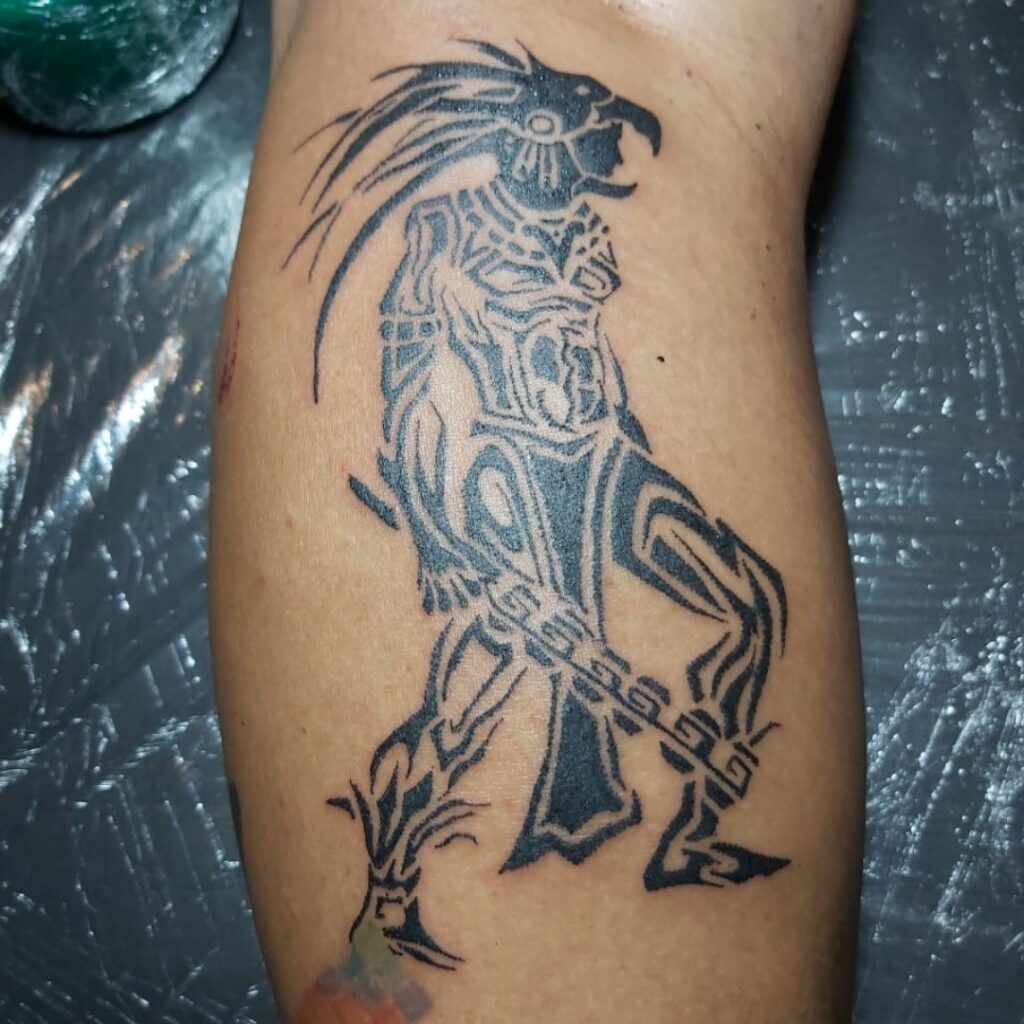
42. Mexican Paper Mache (Cartonería) Tattoo
Cartonería is the traditional Mexican art of creating paper mache figures, often used during celebrations like Día de los Muertos. A Mexican paper mache tattoo typically features colorful and whimsical figures, such as skeletons, animals, or alebrijes, made from paper mache. This tattoo represents the importance of creativity, tradition, and the celebration of life in Mexican culture. The design is usually vibrant and detailed, capturing the playful and artistic nature of cartonería, making it a unique and meaningful tribute to the rich artistic traditions of Mexico.
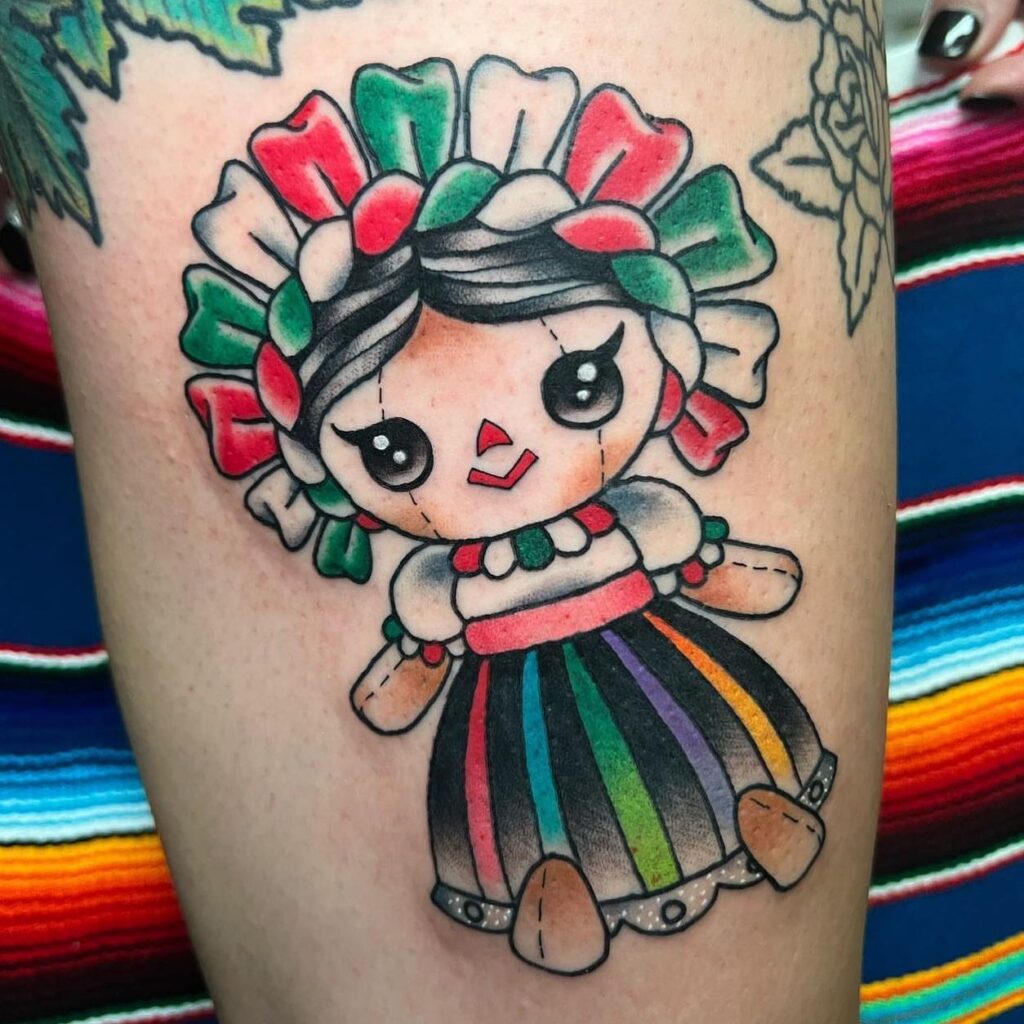
43. Mexican Serpent Tattoo
The serpent is a powerful symbol in Mexican culture, representing transformation, fertility, and the connection between the earth and the sky. A Mexican serpent tattoo typically features a coiled or intertwined serpent, sometimes accompanied by elements like flowers, the sun, or the Mexican flag. This tattoo represents the importance of balance and the cycles of life, as well as the power of nature and the connection between humanity and the earth. The design is usually bold and striking, making it a meaningful and symbolic tribute to Mexican culture and the serpent’s role in mythology and folklore.

44. Mexican Mask (Máscara) Tattoo
Mexican masks are used in traditional dances, festivals, and rituals, often representing gods, spirits, or mythical creatures. A Mexican mask tattoo typically features a colorful and intricate mask, sometimes accompanied by elements like flowers, the sun, or the Mexican flag. This tattoo represents the importance of tradition, spirituality, and the connection between the physical and spiritual worlds in Mexican culture. The design is usually detailed and vibrant, capturing the artistry and cultural significance of Mexican masks, making it a meaningful and symbolic tribute to the rich traditions of Mexico.
